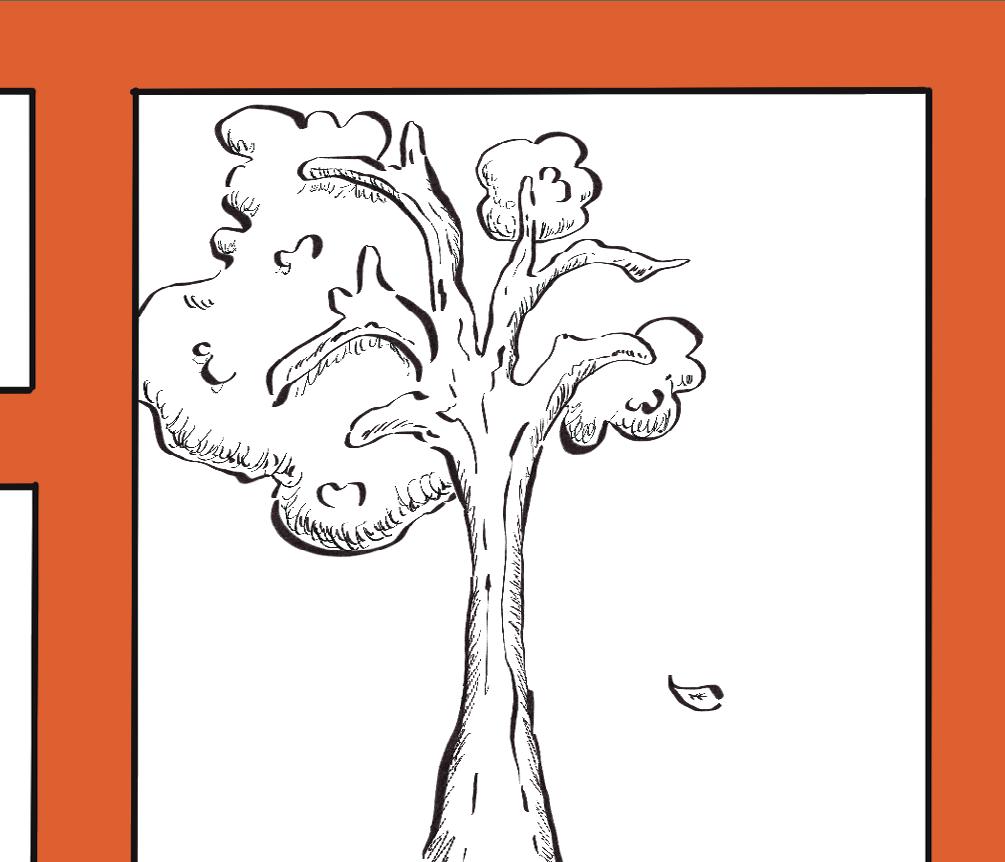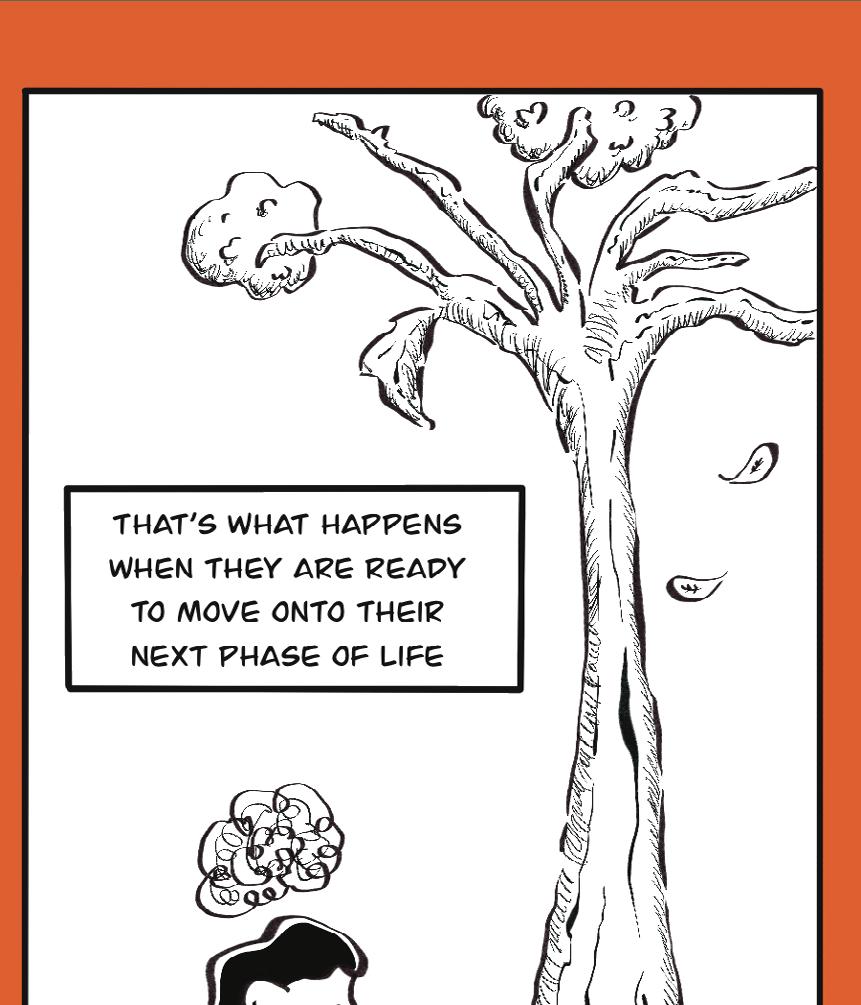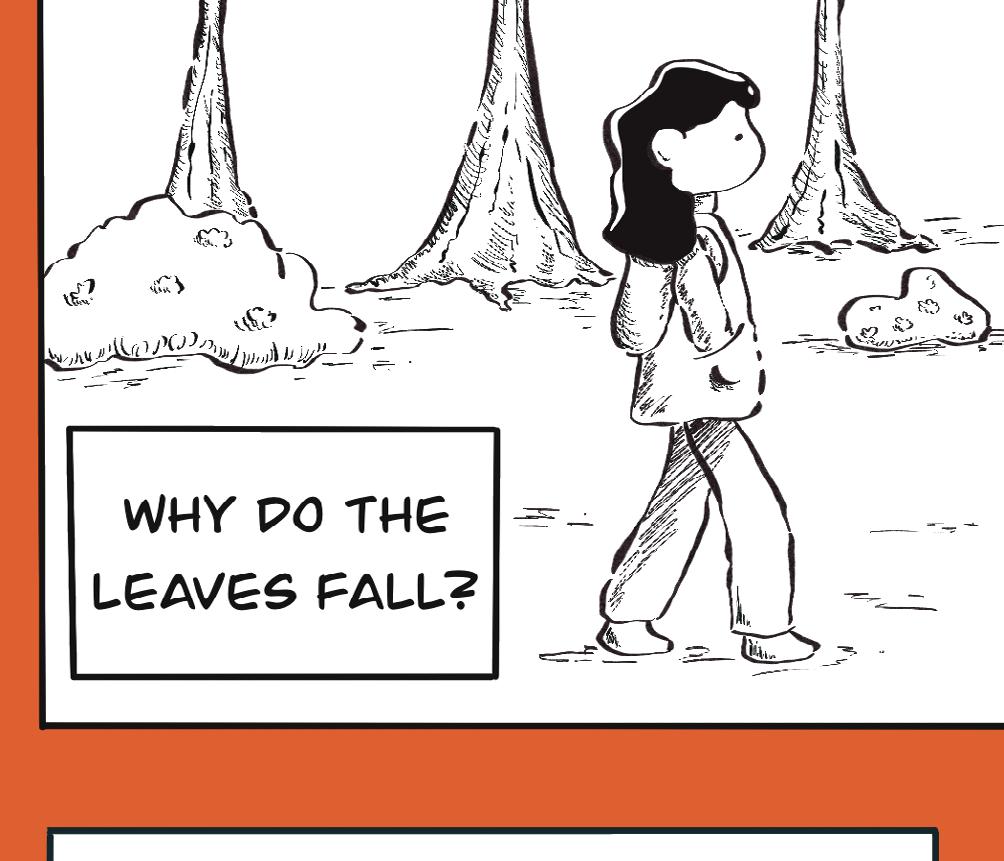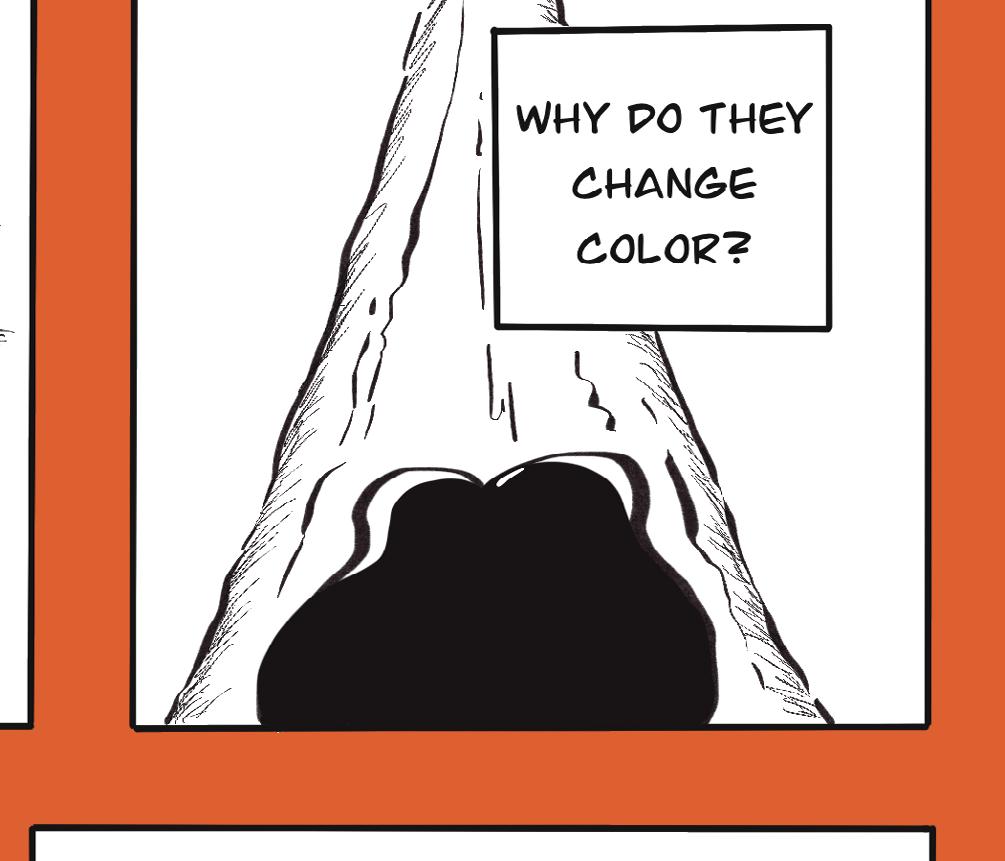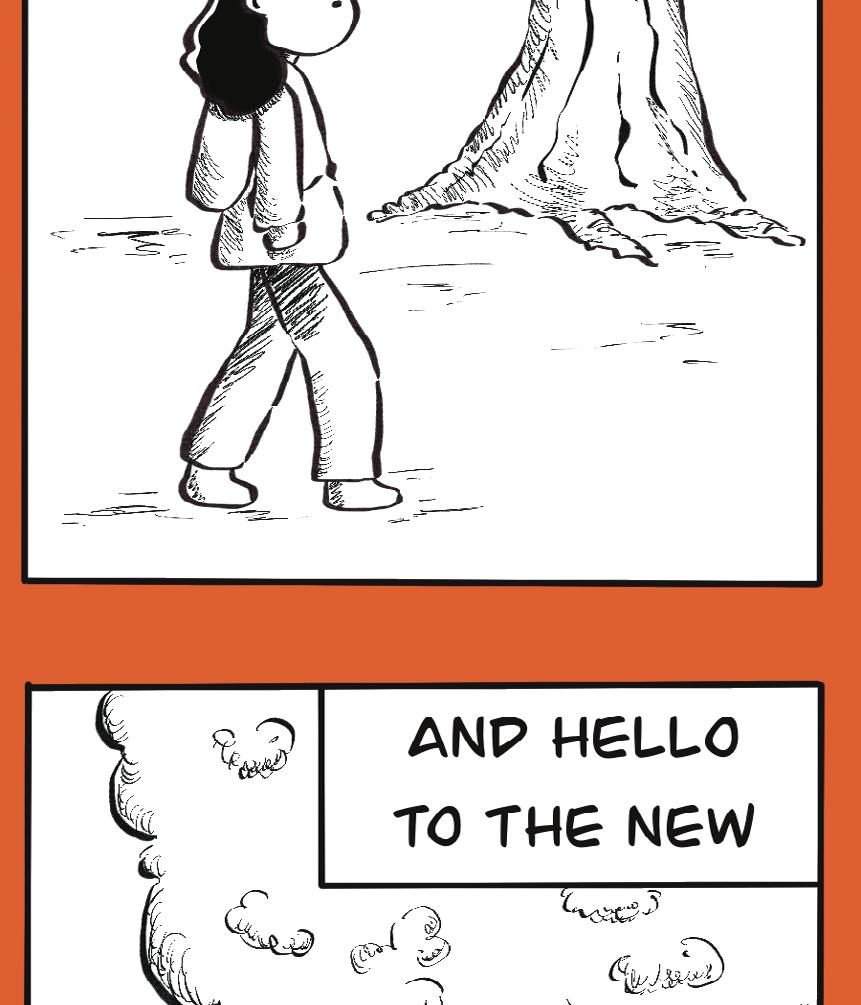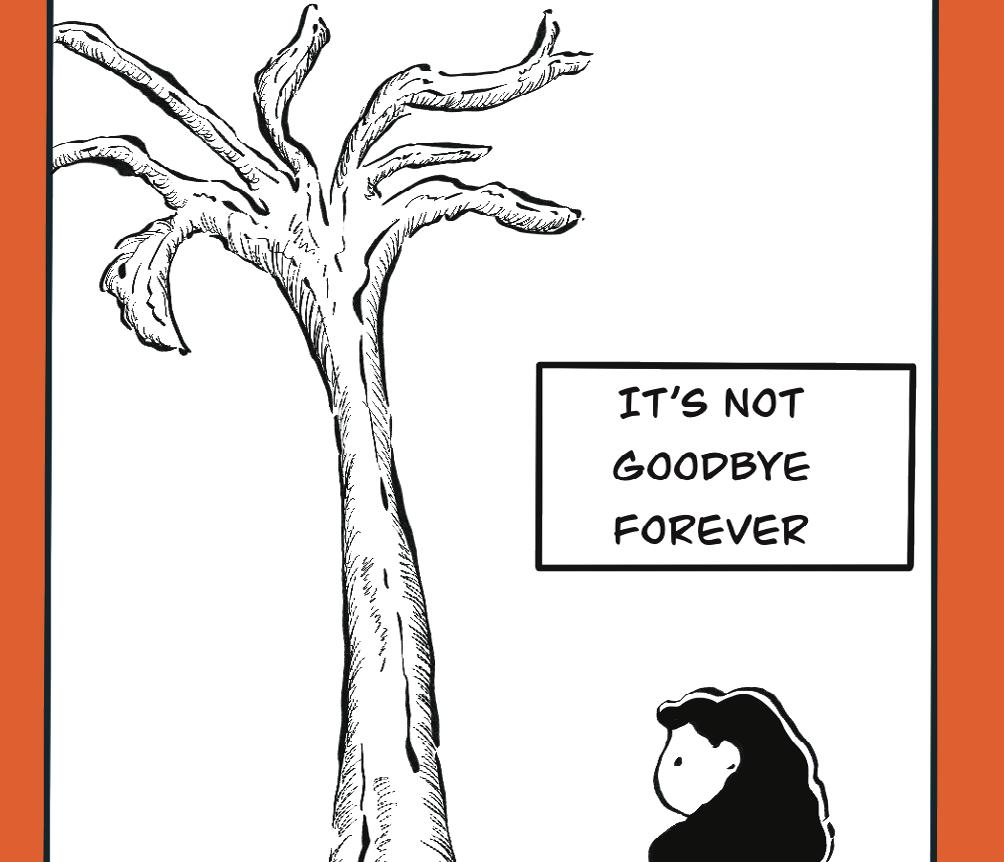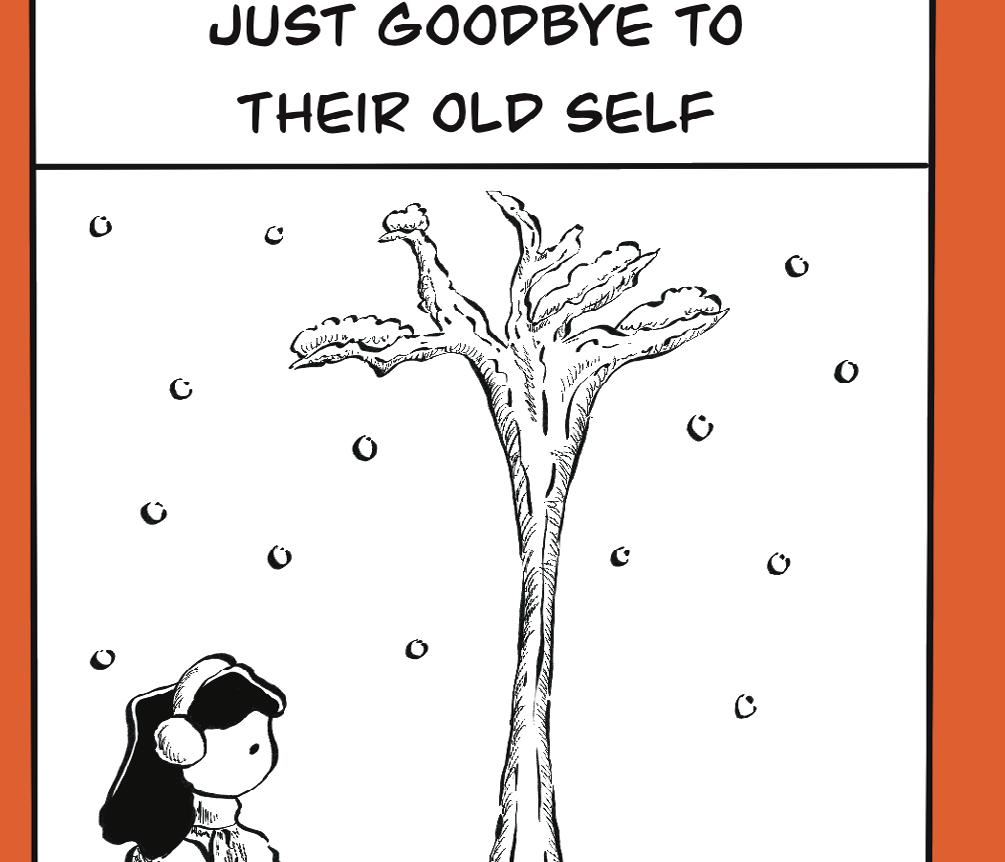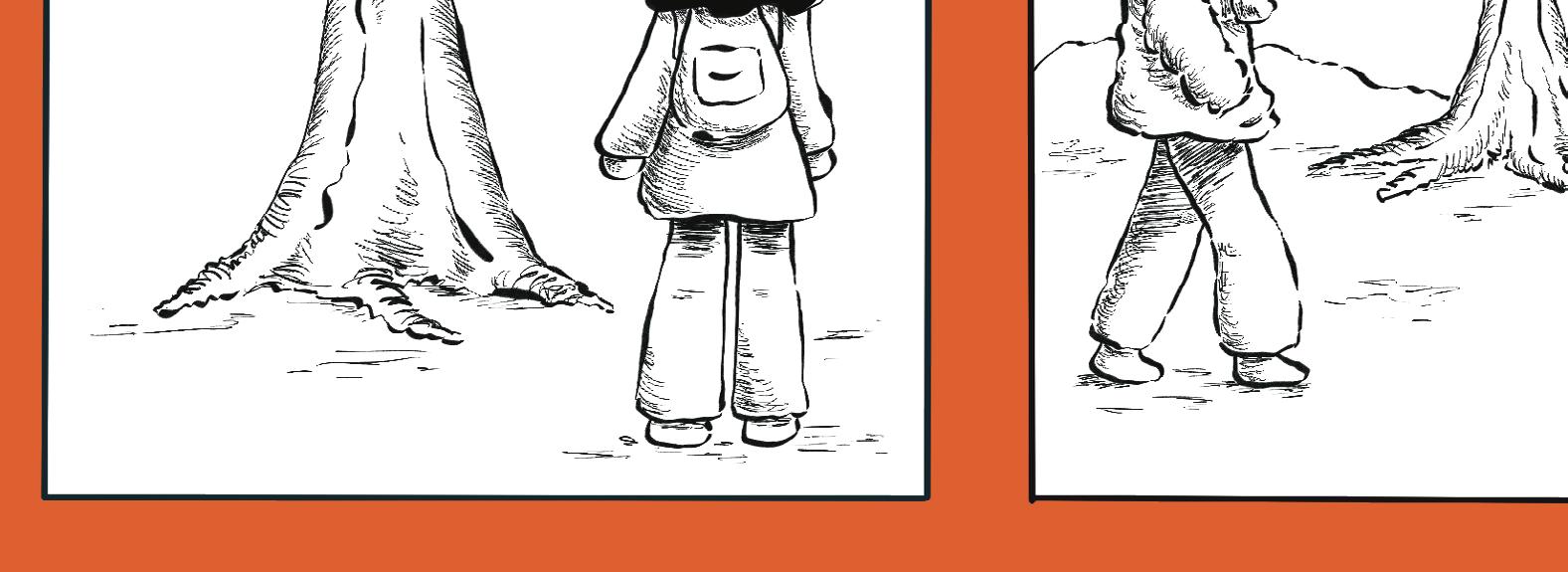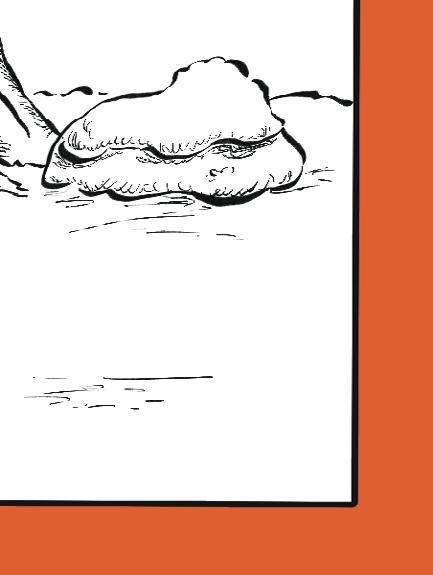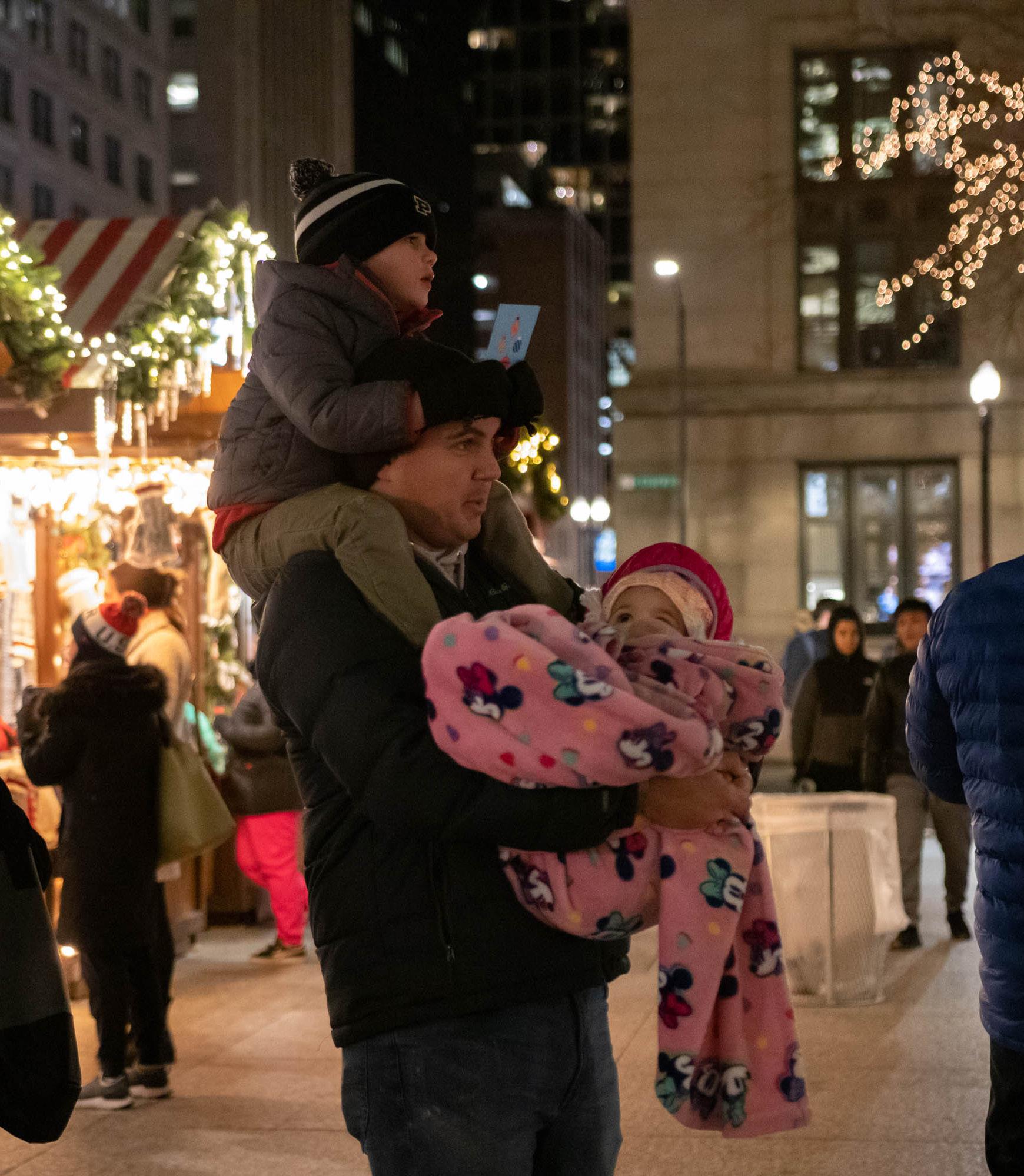




















































 » NOAH JENNINGS CO-EDITOR-IN-CHIEF
» NOAH JENNINGS CO-EDITOR-IN-CHIEF
AS WE TURN our 2022 calendars to their fi nal page, we begin to look ahead to a new year.
At the Chronicle, we’re feeling extra anticipation this time around, as 2023 will mark a big milestone year.
In 1973, the CC Writer published its fi rst issue, representing a monumental breakthrough for an on-campus student publication. Five years later, the Writer would change its name to The Columbia Chronicle that we know today.
In 2023 we will be celebrating the 50th anniversary of student journalism at Columbia, the 50th anniversary of students informing the campus community of what they need to know and the 50th anniversary of students coming together to hold the administration accountable.
With this in mind, we’ve been spending the past several weeks looking back at the Chronicle and CC Writer’s history to enlighten us more on how we became the publication we are today.
As I looked back through the archives of our issues, courtesy of Columbia’s Digital Commons, the fi rst thing I picked up on was some of the obvious differences in design.
The fi rst issue released of the CC Writer was just four pages long and was in black and white. While the Chronicle would eventually dabble in color on its covers in the ’80s and ’90s, the fi rst issue printed fully in color wasn’t published until 2007.
But beyond the immediate look of the pages lies the heart of any Chronicle newspaper: the stories shared.
The very fi rst story featured in the CC Writer was about an accreditation organization visiting the school and observing its functions. It was a topic that students may not have been informed on, and granted, it is a topic that is not easy to explain.
But the CC Writer staff pushed through. They recognized that although it may not represent anything fl ashy and could be considered a dull topic, it was their duty to inform and educate the Columbia community on what was happening.
This is something we continue to strive to do to this day. There may be stories out there for us to cover that are littered with
collegiate jargon, potentially icing out students from holding interest. But the students of this college pay thousands of dollars at a tuition rate that is continuously increasing to attend this school. It is our job to ensure that they are educated and informed of the actions and decisions being made by this institution.
Looking back at the archives, it was also interesting to see how some things have remained the same through the years, especially when it comes to the student body.
One trend is the role the 600 S. Michigan Ave. building has played in student protests. That building, long seen as the central hub of Columbia due in part to the fact that many administration offices reside there, has been the site of student protests for decades.
Whether it be students and faculty protesting apartheid in 1985 or students protesting tuition increases in 2020, 600 S. Michigan Ave. has seen it all.
On the fl ip side, there have been plenty of structural changes to Columbia since 1973. The college once even owned and operated buildings on Lake Shore Drive and on the Near North Side of Chicago.
But even through the shifting of Columbia’s campus, the Chronicle has remained and continued to pursue the news.
The Chronicle has been around for four Columbia presidents and has existed longer than many key institutions within the Columbia community, such as the Student Government Association, the part-time faculty union, or CFAC, and the United Staff of Columbia College.
Through all of these and more monumental changes throughout Columbia’s history, the Chronicle was there, and we intend to stay here.
We look forward to looking back at more of our history in the coming year, but more importantly, the Chronicle looks forward to covering the next 50 years of Columbia’s history, no matter what changes may come.
Anna Busalacchi
Noah Jennings
Olivia Cohen
Justice Lewis
Kamy Smelser
K’Von Jackson
Bianca Kreusel
Peter Midwa
Julie Arroyo
Kayla Macedo
Amanda Burris
Samaher AbuRabah
Amaris Edwards
Irvin Ibarra
Cierra Lemott Leah Love Abra Richardson Elizabeth Rymut Amina Sergazina Robin Sluzas Zoë Takaki
Addison Annis
Jared Callaway Sam Tucker Jackie Elliott John McGowan
The Columbia Chronicle is a student-produced publication of Columbia College Chicago and does not necessarily represent, in whole or in part, the views of college administrators, faculty or students.


All text, photos and graphics are the property of The Columbia Chronicle and may not be reproduced or published without written permission.
Editorials are the opinions of the Editorial Board of The Columbia Chronicle. Columns are the opinions of the author(s).
Views expressed in this publication are those of the writer and are not the opinions of The Columbia Chronicle, Columbia’s Communication Department or Columbia College Chicago. Letters to the editor must include full name, year, major and phone number. Faculty and staff should include their job title. Alumni should include year of graduation, or attendance, and major. Other readers should note their city of residence and occupation or employer, if related to the letter’s subject matter.
All letters are edited for grammar and may be cut due to a limit of space.
The Columbia Chronicle holds the right to limit any one person’s submissions to three per semester.
AFTER MONTHS OF having just interim staff in the Office of Equity Issues, to adding a full-time Title IX coordinator hired in August, the office is finally fully-staffed with a new investigator on board.
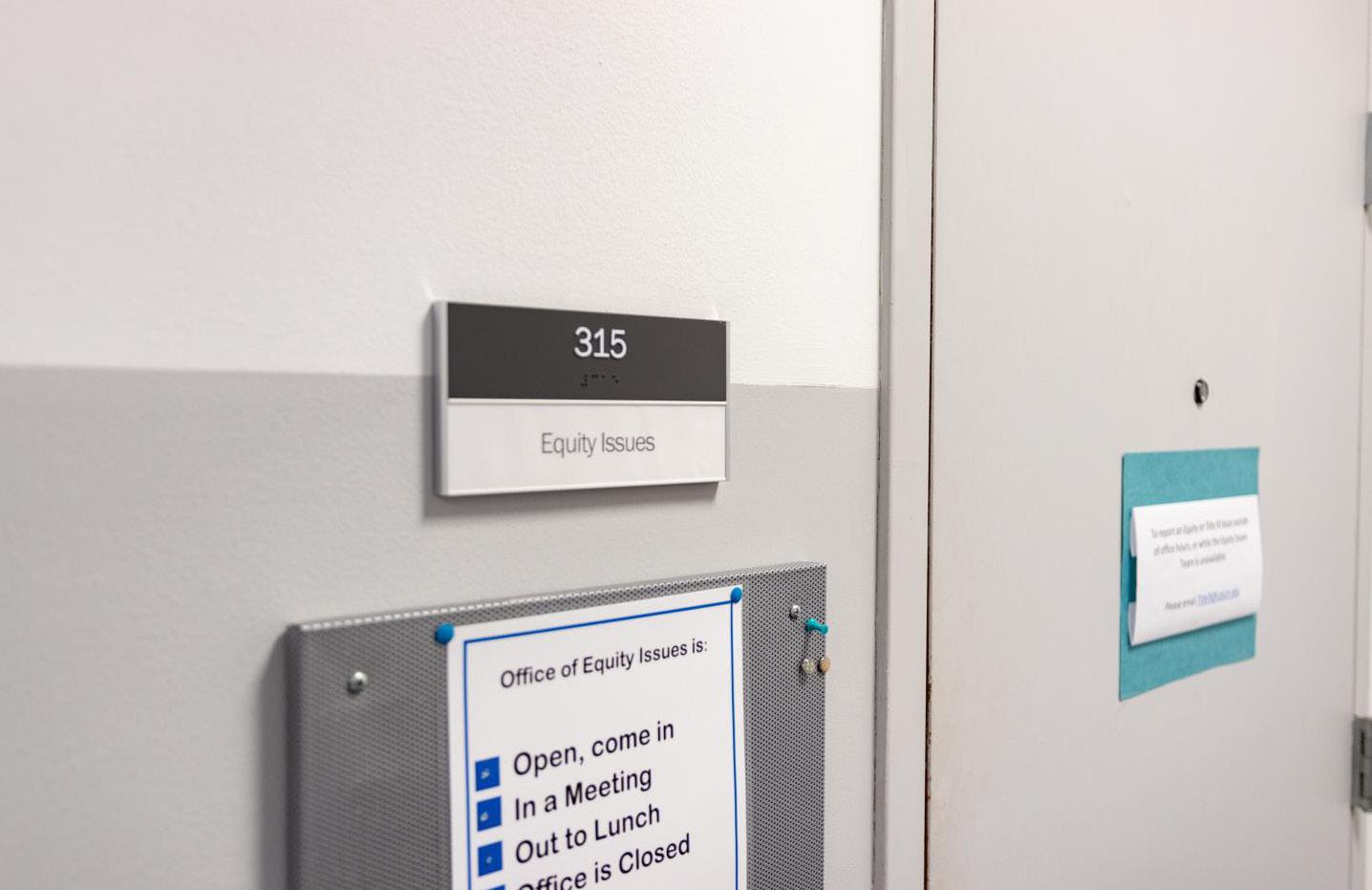
Chaselyn Lewis began work on Oct. 24 as the college’s new full-time Title IX investigator in the Office of Equity Issues, which deals with instances of sexual misconduct and discrimination on campus. She joined Neil Callicoat, the Title IX coordinator and director of the Office of Equity issues, who began working in his position on Aug. 10.
Lewis said since starting the role she has spent time getting familiar with Columbia’s specific Title IX policy and becoming familiar with the city, because prior to receiving this role, she had never been to Chicago.
“I think for any role, you’re going to constantly want to better yourself in the role that you’re going to be taking on,” Lewis said. “I consider myself a forever trainee, because I’m constantly going to be reaching out to learn more about the ever-changing world of Title IX.”
Originally from the small town of St. Martinville in Southern Louisiana, Lewis received her bachelor’s degree in criminal justice with a minor in pre-law and paralegal studies and a Master of Science in homeland secu rity, both from Northwestern State University in Natchitoches, Louisiana. She previously worked at Louisiana Delta Community College as the admissions communications coordinator and Title IX investigator.
“I’m really passionate about the work of Title IX, which although Title IX is very broad, it’s center of being able to remove any educational barriers in the form of … discriminatory barriers,” Lewis said. “So discriminatory barriers, such as
gender bias or sexual harassment, any thing that really affects the student’s ability to gain that education, which is just so important.”
Callicoat said as the point person in the office without a full-time investigator, he was very busy earlier in the semester ad
Callicoat said he and Lewis are working on an informational packet to circulate on campus and restarting the Sexual Assault Awareness Education Commit tee, or SAAEC, back on campus to raise awareness. This committee existed at Columbia for some time, but was dormant during the staff turnaround in the Office of Equity Issues.
Lewis said the committee would host events about consent, the Title IX re porting process and where students can access support. It will be open to students, faculty, student organizations, academic departments, counseling services, Student Diversity and Inclusion and Services for Students with Disabilities. They are hoping to launch the initiative in April during Sexual Assault Awareness month.
“Having one individual here in the Equity Issues office for a couple of months was fine,” Dean of Students Douglas Eck said. “But, we weren’t able to engage in some of those educational and proactive
staff and students to hear the same mes sage, to make sure that we’re all on the same page, the same foundation when it comes to our rights, our responsibilities in the Title IX atmosphere,” Eck said.
Eck said the decision to bring in outside experts relates to the Mayer Brown inves tigation into sexual assault allegations against former professor Sam Weller, which found areas needing improvement in the college’s handling of related cases. The Mayer Brown investigation led to Weller’s termination.
Eck said the group will consult on internal processes at the college, but also provide training for the entire Columbia community.
Eck said he was a part of the committee that interviewed different groups who consult in this area, along with leaders in Human Resources, the Dean of Students office, Student Affairs, the Office of Equity Issues and the President’s Office.
The committee of stakeholders, he said,
dressing numerous issues that come into the Office of Equity Issues and providing supportive measures to students.
“Now that Chaselyn is on board, [I’m] very happy to have a little bit of time to breathe and focus on some things other than just handling student reports and supporting students and trying to get a little more proactive versus reactive,” Callicoat said.
measures for training and for education. And so now we can balance both with a fully staffed office.”
Eck said there will be an announcement coming from the Office of the President about a new partnership with a coalition of “national experts in Title IX landscape in higher education.”
“It will be a comprehensive opportunity for the entire campus community, faculty,
looked for the resources, training and how the experts align with Columbia’s processes, which has led to the final stages of formalizing a potential partnership.
In an email to the Chronicle on Nov. 30, Chief of Staff Laurent Pernot said the goal is to have the experts on campus in the spring, but they are still working on the partnership.
EFFECTIVE NEXT ACADEMIC year, Colum bia students will see a 5% increase in their tuition.
This increase will total $1,464, bumping up the cost of full-time tuition to $30,734 before financial aid for undergraduate students.
In an email sent to students, the college said the Board of Trustees approved the increase on Nov. 1. The increases will also include changes to the college’s standard ized “flat fee” and to student housing.
Columbia’s required fees will increase by 2% – adding $29 to the fee – totaling $1,479. Charges for Study Abroad, Semester in LA and the U-Pass are not included in the new figure.
Graduate students will see an increase in their tuition rate per credit, with the overall cost varying by program, which will on average equal a 5% increase, according to a separate email from Kim.
The cost of on-campus housing will increase by 3% to reflect rent increases from the owners of residence halls that lease space to the college.
“Our Board [of Trustees] is very aware that when we raise tuition in some ways, the most pressure falls on continuing students, because new students come in at whatever the tuition rate is,” said President and CEO Kwang-Wu Kim. “So there’s been a big push from our board to raise new money” to provide scholarships to help continuing students.
This new increase comes nearly one year after Columbia’s administration announced a 10% tuition increase for the current academic year, as reported by the Chronicle on Nov. 16, 2021.
“I think that the tuition increase is really going to impact students. The 10% last year, that really hurt and that affected a large portion of our students — all of us,” said Tyler Harding, Student Government Association president. “And I think 5%, although it’s not 10, is also a lot.”
Harding described Columbia’s large tuition increases in recent years as “spo radic,” compared to other institutions whose increases are traditionally lower than Columbia’s.

Last year, DePaul University announced a 2-3% increase in tuition for the 2022-23 academic year, according to the DePaulia.
Tuition for the class entering in 2022 in most programs was $42,189, according to the DePaul website.
“And I think that as an institution, we need to look at trying to be more predictable in our tuition increase,” Harding said. “And I think that that would really help students because we shouldn’t have to worry if next year’s tuition is going to be a 10% increase. And because, I mean, the reality is a lot of students that go to Columbia pay for their own tuition. And so students who are sav ing up money by working a job, they need to know how much to save up to spend on tuition.”
Kate Apostolacus, a senior entertain ment marketing major, is the mental health senator for SGA and an Engage Leader on Columbia’s Engage app. Apostolacus described the increase as a “slap in the face.” “Honestly, every institution in America has a tuition increase. If it’s going to be nor mal, like two, three, four percent, you know, everyone’s still going to be mad about it, but like, I don’t think it’ll be bad,” Apostolacus said. “If it’s more than 5%, it’s going to be a slap in the face. Here we are [with] 5%.”
Harding said the SGA has been working with other departments at Columbia to help share ways students can find help to pay for col lege and ease some of the students’ confusion.
“We’ve reached out to different departments at Columbia [to put] to gether resources to dis tribute to students about finding scholarships and different financial ways to pay for college,” Harding said. “The first thought that enters peo ple’s head is how am I going to pay for college, and SGA wants to make sure that students are aware of the resources that Columbia has and is offered. So that is our goal that we are working on.” The email announcement from the administration said the Columbia Cen tral team will work with students and families to make awards based on
financial need and individual circumstances, “as always.”
In tandem with the increase, the Board of Trustees has approved Kim’s new Stra tegic Plan, “Building Our Brighter Future,” which includes a section on “long-term financial viability.”
“In collaboration with the Board of Trust ees, we will continue to implement a longterm undergraduate and graduate tuition pricing strategy that increases tuition to a level which reflects the value of a Columbia education, facilitates the more strategic use of student financial aid resources to support student recruitment goals and address student affordability concerns,” the strategic plan said.
According to the email, the overall plan is meant to broaden the effort to reshape the Columbia student experience and to reflect the ongoing commitment the college has to help students achieve professional success.
Kim said the college will close this year with a deficit of $26 million, which he said is planned and “not an accident.”
“We decided in order to provide more support for our students and generate higher levels of student support, we had to do this,” Kim said. “The challenge, and we were doing fine until the year before the pandemic when COVID hit, a whole new set of financial pressures [that] came up to the college, so the deficit has grown, not shrunk.”
Kim said approximately $36 million of the college’s expenditures goes to various scholarships for students. He said since becoming Columbia’s president and CEO in 2013, the number of scholarships the school awards to students has doubled.
Kim said 85% of the money that comes from tuition and the school’s endowment funds employees, faculty and staff, while the remaining 15% goes into the school’s operating budget, which includes building repairs, capital improvements and utilities.
“So when we’re raising tuition, it’s not that that money is going any place new; it’s that the cost of what I just described keeps going up, and we have no other way to fund the college,” Kim said.
Zoë Takaki contributed to this story.

Tyler Harding, a sophomore in the Cinema and Television Arts Department, is the SGA president and one of four newly elected executive board members for the 2022-2023 academic year.
“I think that everybody who comes to SGA, they come motivated [and] ready to change Columbia for the better,” Harding said. “We’re really here to make Columbia a better place for students to learn and grow.”

Iesha Brown, executive vice president of communications, is new to the executive board this year. She is a senior communication major who hopes to achieve more diversity on campus and within SGA.
“By being one of the people of color in SGA, period, I feel like that creates so many open doors for other minorities and other backgrounds,” Brown said. “There’s so many opportunities at Columbia and everyone should take advantage of that … everything that I’ve done in SGA has really helped me to help someone else.”
wants to build a greater sense of community at the college, especially among commuter students.
“We’re in a really special position because you’re a student, working for the students,” said Vasquez, who is a junior English major. “My interest and my passion [in] pursuing advocacy work really came from student government.”
» IRVIN IBARRA STAFF REPORTERTHE IDEAS OF advocacy, inclusion and creative initiatives remain at the top of the Student Government Association’s priorities as it approaches the second semester of the 2022-2023 school year.

Two of its biggest priorities are environmental sustainability and better accessibility for students with disabilities.
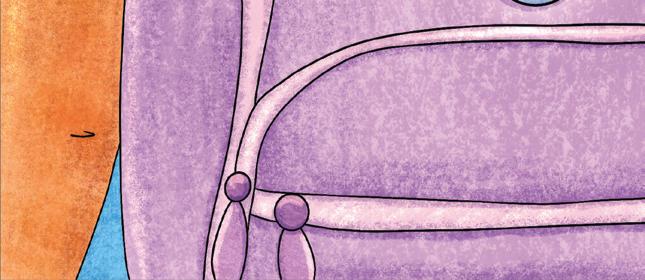

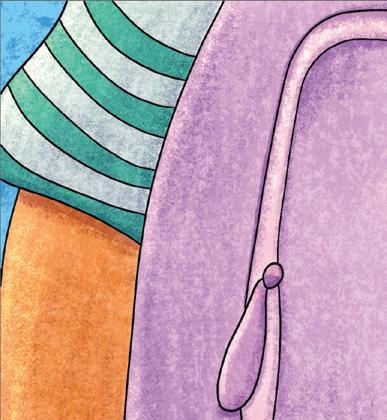
Last year, Harding was a senator for the CTVA Department and wanted to address issues he saw beyond his department. Harding campaigned on the initiative to restructure how SGA funds senator-led initiatives through distributing additional funds left over in the budget for the following semester.
Last year, one initiative by SGA was its food pantry in collaboration with ColumbiaCares, resulting in $1,000 of SGA’s budget being allocated to help provide food for students.
Brown started at SGA as a senator for the Communication Department when she was a junior. Responsible for SGA’s social media channels, she hopes the association can increase its outreach and build a greater presence on campus.
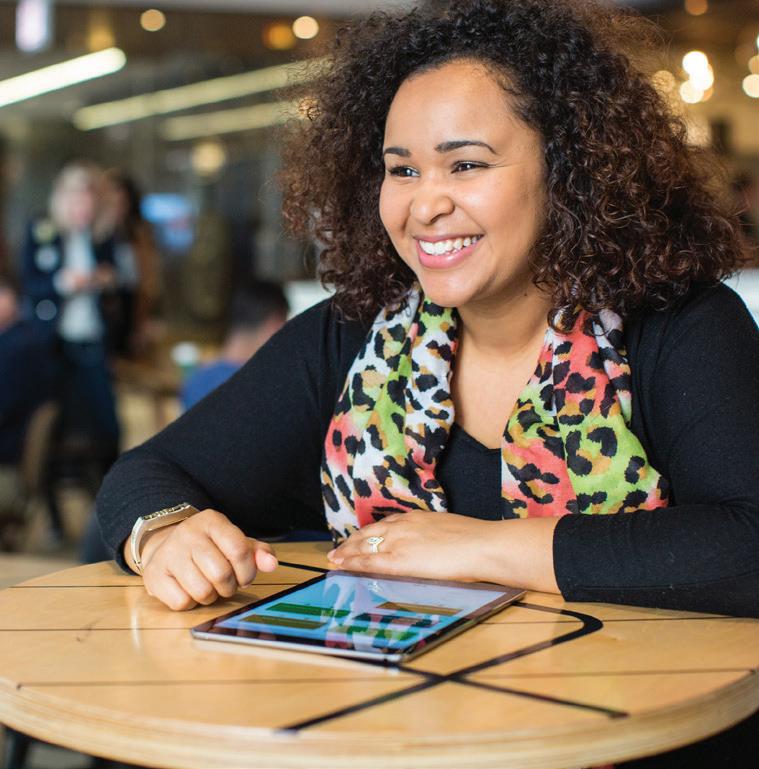
“It’s about putting ourselves out there and showing people the actual change that we created and not just showing them that we’re all about change and we’re not doing it,” Brown said.
Elizabeth Barajas Vasquez, a student representative for the Board of Trustees,

Elected to the executive board this year, Vasquez commutes to campus and said she feels she lost her fi rst two years of the typical college experience due to the COVID-19 pandemic. As a student representative, she hopes to help students who relate to her experience and to help build community groups among underrepresented students on campus.
“What makes Columbia incredible is everyone’s here to be creative and we’re all from different walks of life,” Harding said. “We have an absolutely incredible executive board and I’m so excited for [the rest of] this year together.”
FROM SUGAR-COATED retellings of the first Thanksgiving to inaccurate imaginings of Columbus, Native American history and culture within education has long been mistreated and underrepresented — but one Columbia program is working to right this country’s wrongs.
Each year since 1990, the month of November is federally recognized as Native American Heritage Month. On campus, Student Diversity and Inclusion organized a number of events in honor of this: two trips to view the cultural history exhibits at the Field Museum and one on-campus conversation titled “HISTORYtalks: Natives of America.”
Anakaren Pinto, SDI events and edu cation coordinator, created the HISTO RYtalks program to host conversations not often had in classrooms. The Nov. 11 event, held in the SDI office located on the fourth floor of the 618 S. Michigan Ave. building, is the premiere event of a potentially reoccurring series.
SDI Director Charee Mosby-Holloway touched on the lack of education most Americans have as it pertains to Native American history and the effort to spark more conversations.

“The ways in which people become erased from history … white suprem acy has made a concentrated effort to erase [Native American people] through violence, all kinds of things. But folks are still here; there are still incredi bly beautiful, thriving communities,” Mosby-Holloway said.
Historian Eric Siemann was invited to give a pre sentation on campus about the historical treatment of Native American populations by the government with the hope of inspiring change through more extensive education.
“Some of the big takeaways will be understanding the ori gins of federal Native policy and extrapolating that to modern day to see how that is still affecting these groups, which hopefully then will lead to seeds of activ ism,” Siemann said of his presen tation. “I’m hoping that people who [came] to this [event] will be inspired and want to take steps to promote the cause and correct some of the wrongdoings that have been brushed to the side.”

Siemann covered a variety of topics throughout his lecture, including misleading treaties and forced removals, as well as residential assimilation schools and performative activism.
Columbia currently has few courses dedicated to Native American history and culture.
C. Richard King is the chair of Colum bia’s Humanities, History and Social Sciences Department and has an exten sive background in Indigenous studies. He acknowledged the lack of sufficient courses at Columbia.
“I think not having more than a few classes on campus that deal with Native issues exclusively is problematic,” King said. “And it is a part of a larger pattern in which Native Americans and history are disappeared from conversations.”
King said there is only a brief time frame in which mainstream society engages with Native people’s history.
“Native Americans get remembered when white people want to remember Native Americans,” King said. “It runs roughly from what we still call Columbus Day until Thanksgiving.”
Pinto said she and her colleagues at SDI want to change this pattern. She is open to any and all subjects students or faculty may want to cover in future HISTORYtalks events. Pinto can be contacted at apinto@colum.edu.
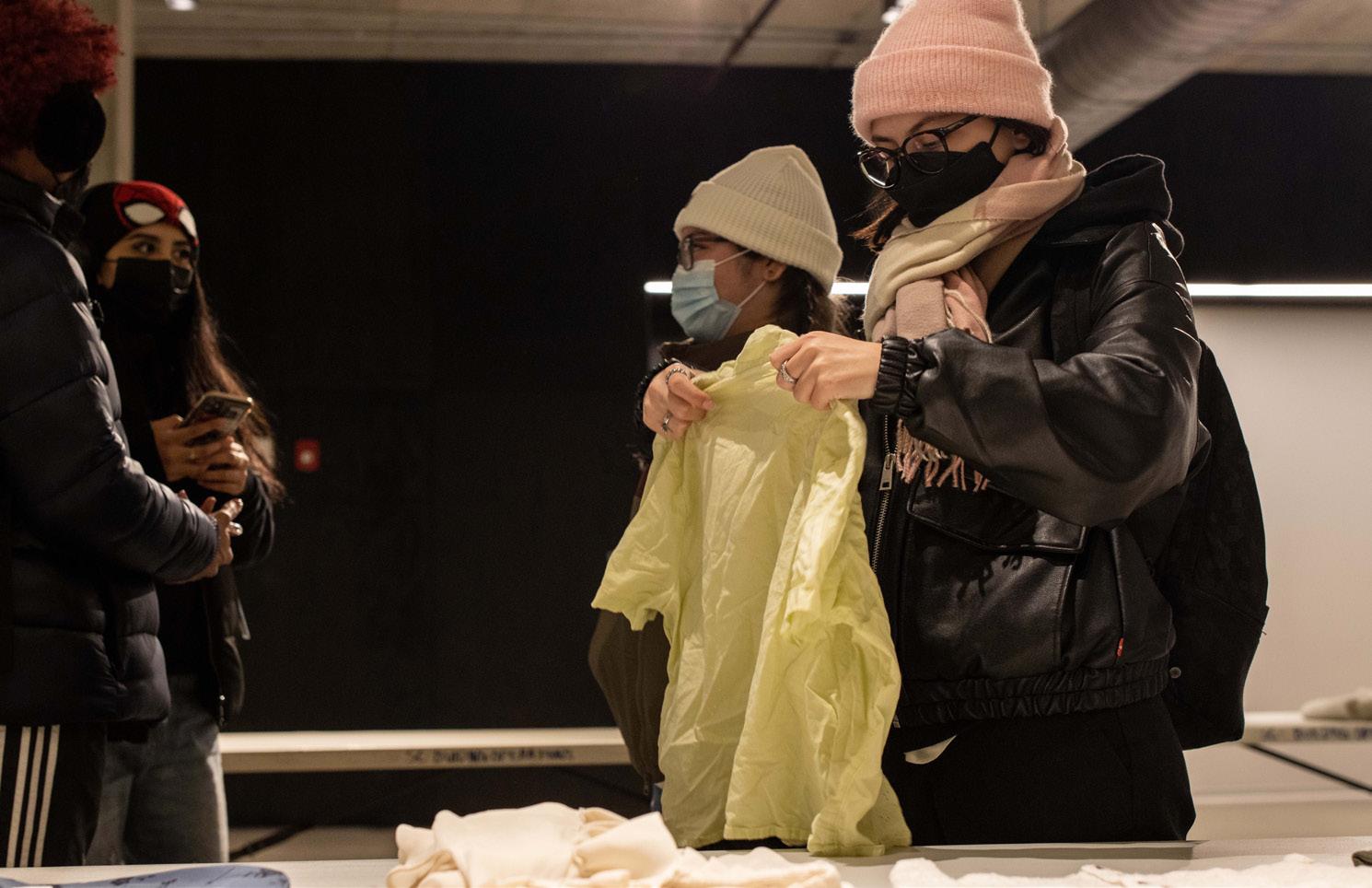 » LEAH LOVE STAFF REPORTER
» LEAH LOVE STAFF REPORTER
LAST YEAR, ANNA Stobaugh learned how to mend. During a workshop held by the Fashion Department, the senior fashion major fell in love with the craft.
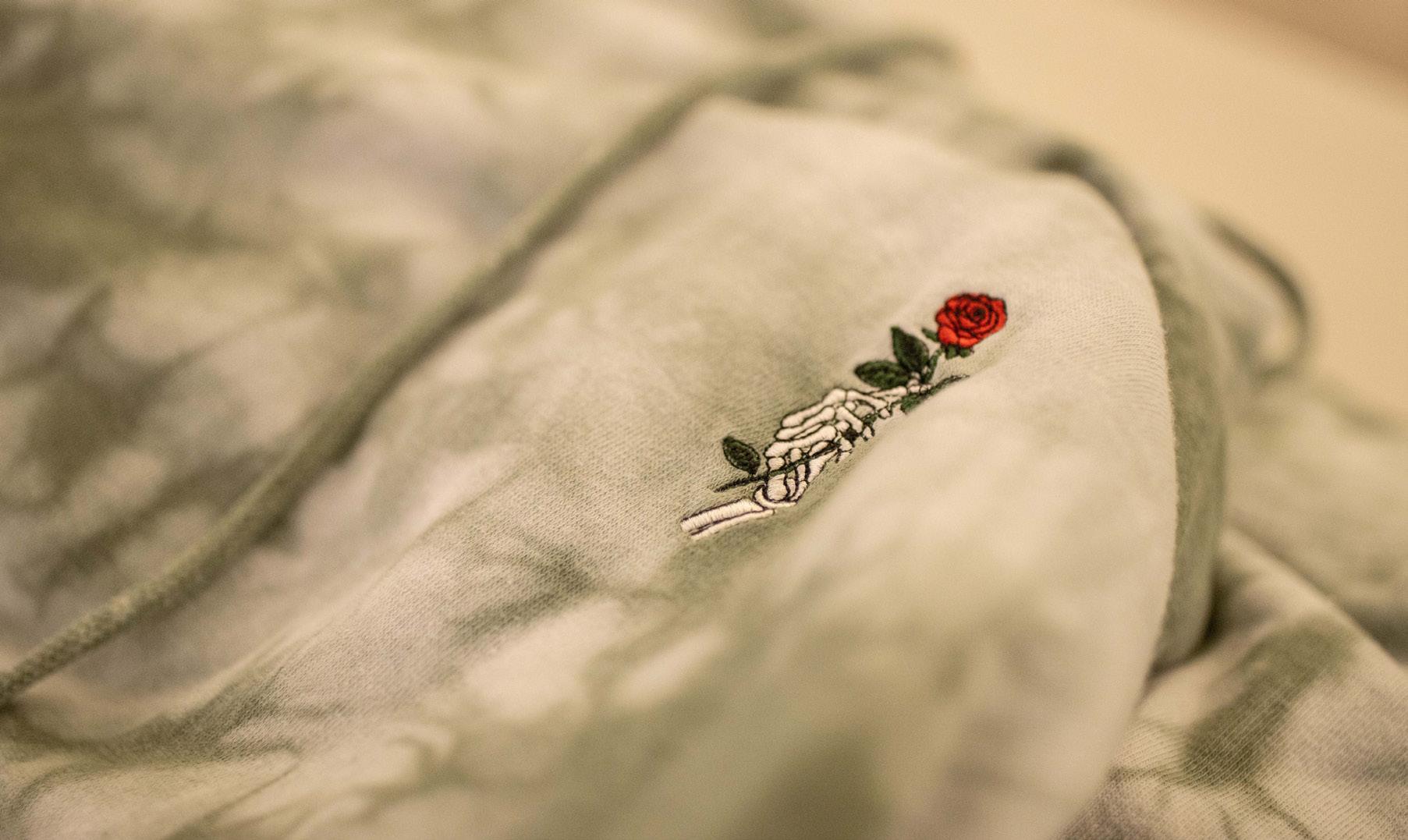
“I did it once and [thought], ‘Wow, this is so fun,’” Stobaugh said. “Then every hole that has been in my clothes ever since, I’m like, ‘I know how to fix that.’ Once was all it took for me and [now] I love mending.”
When she was asked to lead a weekly mending workshop — Mend It Mondays
— as part of the Fashion Department’s Nothing New November initiative, Stob augh, a sustainable fashion minor, agreed.
Every Monday in November, Stobaugh taught interested students two mending techniques — darning and sashiko — in hopes that in the future, they will fix their old clothes, rather than purchase new clothes.
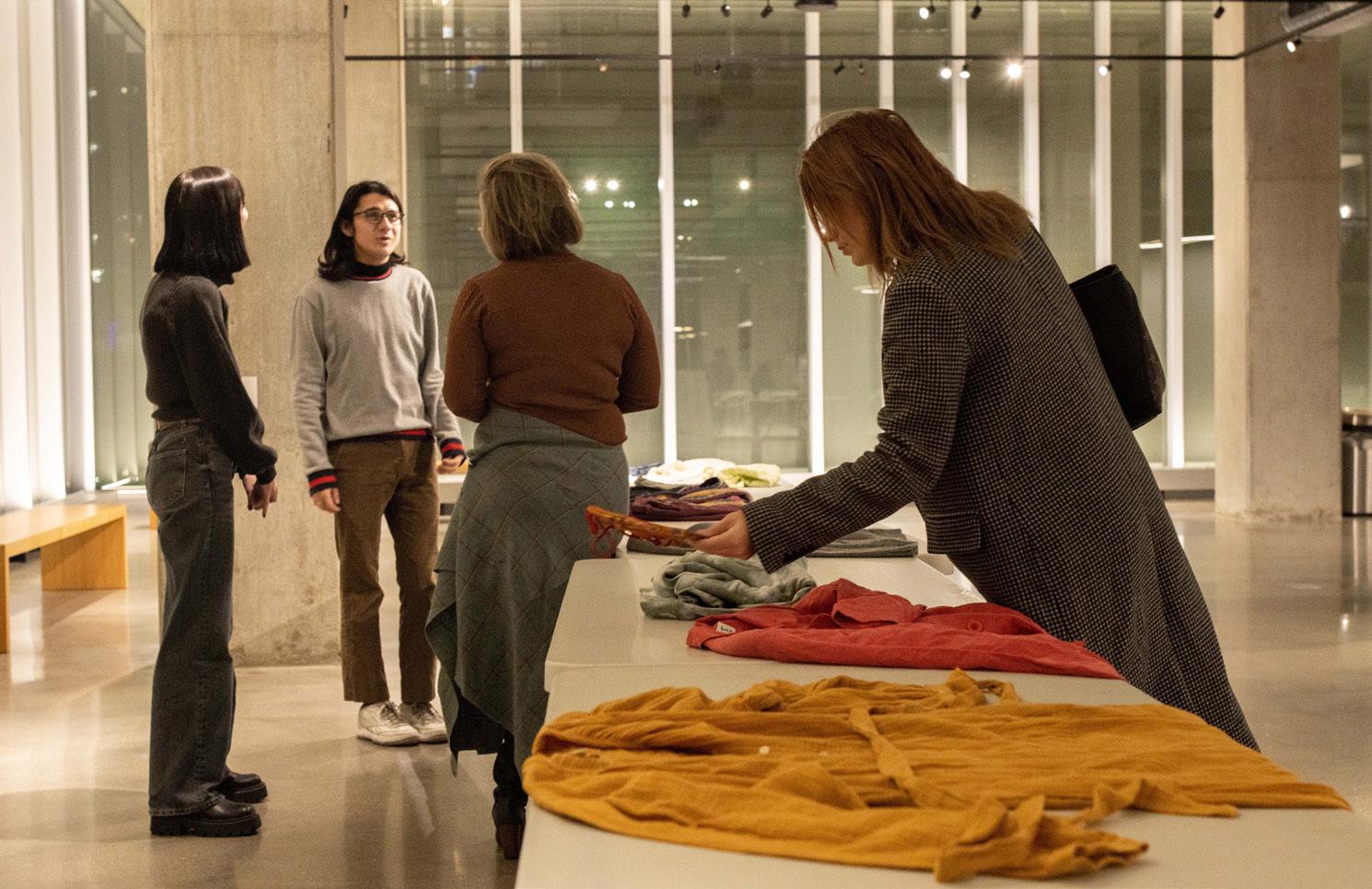
Nothing New November encourages consumers to not purchase new clothing or accessories during the month of November, said Colbey Reid, professor and chair of the Fashion Studies Department. The depart
ment put out a pledge participants could sign to promise to only purchase vintage or thrifted items during the month.
Reid encourages people to make their own parameters and make exceptions as they see fit. However, Reid said one chal lenge of the initiative was that it took place the same month as Black Friday, when many are starting to shop for the holiday season. Reid said this made November a meaningful time to “explore a new con sumption practice.”
The Fashion Study Collection, which is an academic resource that holds thou sands of vintage, de signer and ethnic wear pieces, participated in Nothing New Novem ber with a benefit sale on Nov. 8. The sale con sisted of vintage cloth ing and sewing patterns that had been removed from the archive and made available for sale with proceeds going toward supporting the collection. The Fashion Department also held a clothing swap event at the Student Center on Nov. 17.
Nothing New Novem ber began at Columbia last year as “a way for us to publicly declare our stance on making the
fashion industry more sustainable,” Reid said. “And then also, of course, giving our students who are really passionate about that issue an opportunity to take action [and] invite other people to take action.”
According to a 2020 McKinsey & Com pany study, the fashion industry is respon sible for about 4% of the world’s greenhouse gas emissions, but sustainable practices such as buying secondhand and repurpos ing old items can curb some of the impact.
Ija Wright, a junior marketing major, has been an avid thrifter since she was 9 years old and leveraged her interest into her store and styling business, Authentic Closet. She stopped buying new clothes for two semesters straight last year, which she said helped her be grateful for what she already had. She has continued the practice this year, altering her wardrobe rather than buying new items.
“I will look at certain items in my closet like ‘Oh, I could turn this into something else,’ so maybe like a pair of jeans that I really don’t like the fit on anymore, I’ll turn into a skirt,” Wright said.
Wright said shopping more sustainably requires a change of mindset.
“Be more innovative with the way you look and how you want to walk through this life,” Wright said.
WHETHER ROCKING A flared jean silhouette from the ’70s or fl aunting a puffer coat from the early 2000s, Columbia students have taken to a range of styles and trends worn in past eras of fashion.

Lauren Peters, an assistant professor in the Fashion Department, said this phenomenon is due to the “20 year trend cycle,” as trends from the past present themselves as familiar, yet fresh.
“It really is just the nature of trend cycles,” Peters said. “There’s a lot of talk now about micro-trends, especially micro-trends that popped up on social media platforms during the pandemic.”
Within micro-trends, Peters said specifically during the spring and summer on Columbia’s campus she saw students tap into maximalist, avant-basic styles by wearing pastels and electric colors as well as nautical-inspired clothing when tapping into the coastal grandma trend.
Debra Riley Parr, an associate professor in the Art and Art History Department, said during her time at Columbia since 2000, she has seen many ways students express themselves, from postpunk to grunge.
“I think that one thing that I’ve really noticed is how students over the years have really used fashion as a signifier of social and cultural positions, maybe with respect to gender or class,” Parr said. “They’re really attuned to the idea of the visual as a way to signify meaning and belonging, as well as maybe a form of resistance as well.”
With trends such as the return of low-rise baggy jeans from Y2K, or the
year 2000 — right around the time many current Columbia students were born, fi rst-year fashion studies major Julie Lewis said these trends are not her personal style.

“That’s what I love about fashion is just because I don’t like something doesn’t mean it won’t look great on someone else; there’s something for everyone,” Lewis said.
Looking back further into what trends have spurred from the ’70s, bell-bottom jeans and bold patterned florals have made a comeback.
Peters said flared jeans — while known as a trend from the ’70s — were reimagined in the late ’90s and early 2000s.
“If we’re thinking again about the 20 year trend cycle, fl ares were ubiquitous in the late 1990s and even into the early
2000s. But during that time period, they were referencing the 1970s whenever flares were popular,” Peters said.
From fashion trends that occurred in the ’80s and ’90s, there’s a rising interest on campus of puffer jackets, baby tees and corset tops.
Some Columbia students have taken part in one trend that stretches as far back into the 16th century, which is the bleaching of eyebrows. Peters said as a fashion historian this trend has especially piqued her interest.
“The intensity with which this trend has emerged over the last month just blows me away, because I’ll show up to class to teach and three or four more students will have dyed their eyebrows over the weekend,” Peters said.
The trend, which has inspired influ-
encers like Kim Kardashian, can also be credited to Mona Lisa. Peters said in Europe during the 16th century this trend was meant to give women the appearance of a larger forehead, and, if looked at close enough, Mona Lisa’s famous portrait portrays the bleached brows that have resurfaced today.
Peters said Columbia students are more inspired to express themselves outside of mainstream trends and have taken to reinterpreting them.
“Whenever I talk to especially transfer students who have come to the big state colleges, they say everybody dresses exactly the same,” Peters said. “Whereas at Columbia, it feels like you’re going to a fashion show every day in class.”


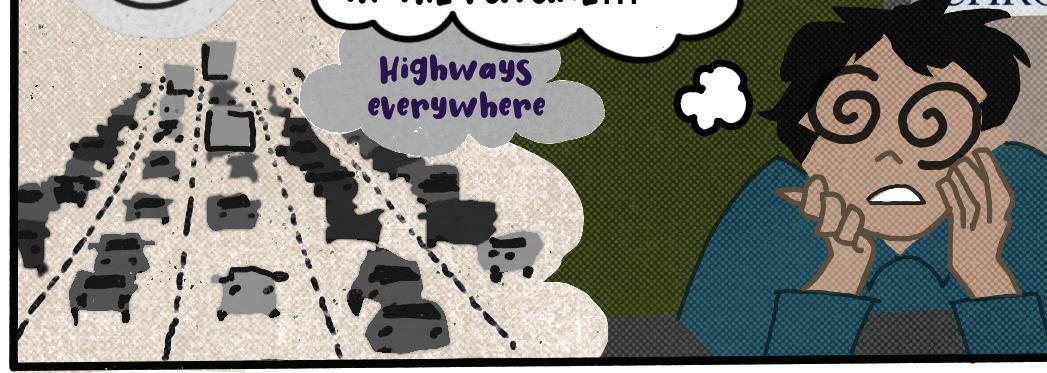
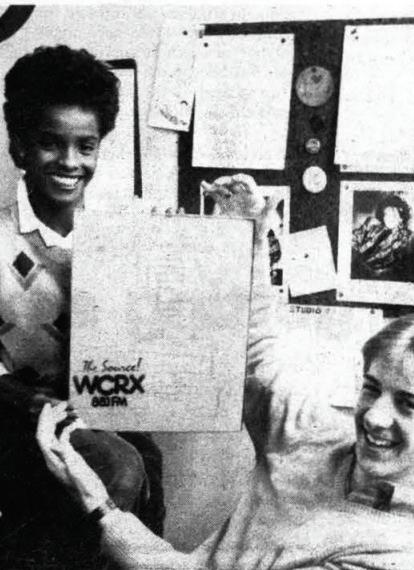




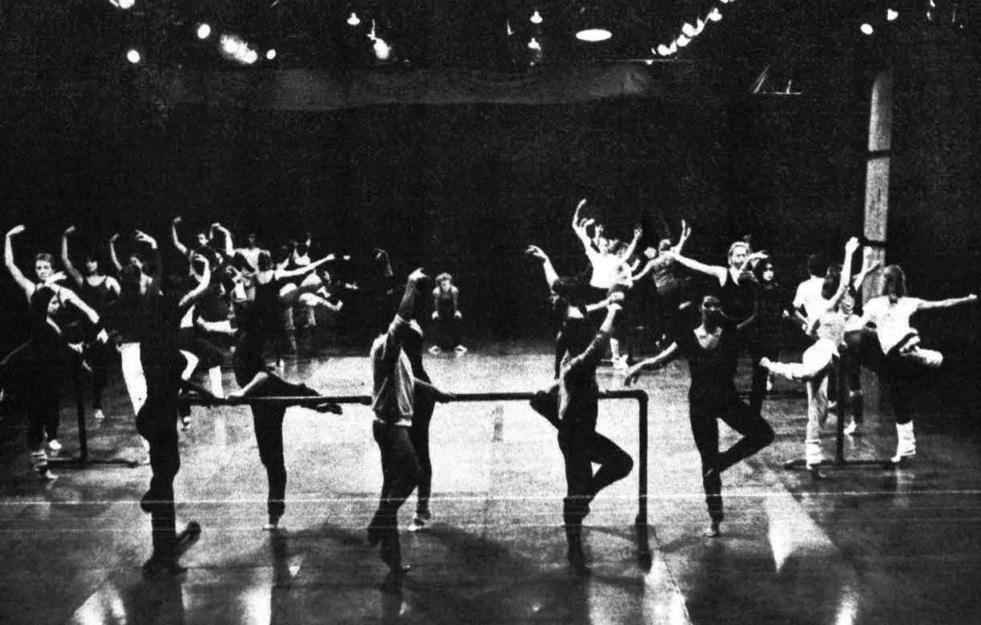
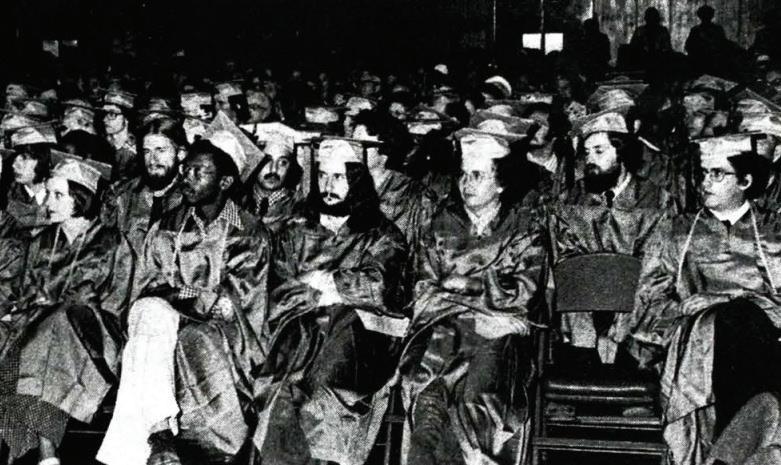
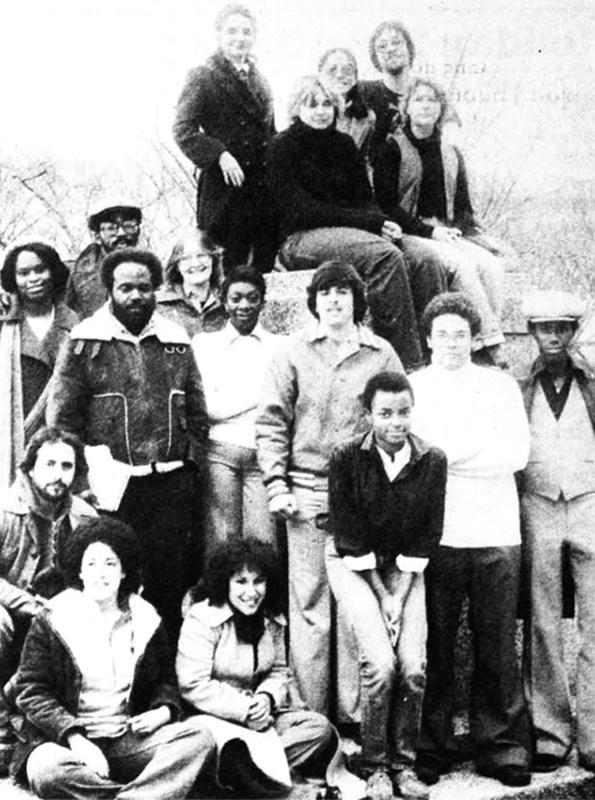


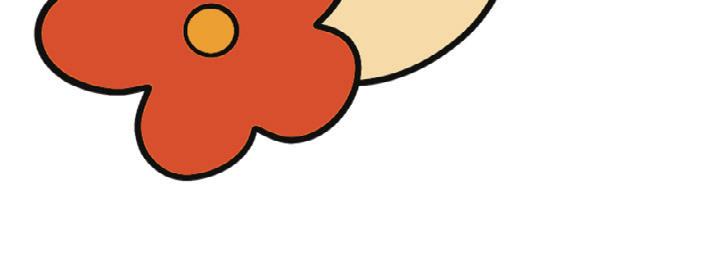









CHRONICLE STAFF IN 2023 THE Chronicle will be celebrating the 50th anniversary of the CC Writer, the Chronicle’s original name. In anticipation of the milestone year to come, the Chronicle is taking a look back at 50 years of history and analyzing what has changed and what has stood the test of time.
5. IN 1985, WCRX, COLUMBIA’S STUDENT RADIO STATION, PURCHASED A NEW POWER SYSTEM, JUST THREE YEARS AFTER THE COLLEGE ACQUIRED THE RIGHTS TO 88.1 FM. THAT ALLOWED THE STATION TO BE PICKED UP ACROSS CHICAGOLAND. TODAY, WCRX IS STILL OPERATED BY STUDENTS DAILY, PLAYING MUSIC AND PRODUCING A VARIETY OF TALK SHOWS.
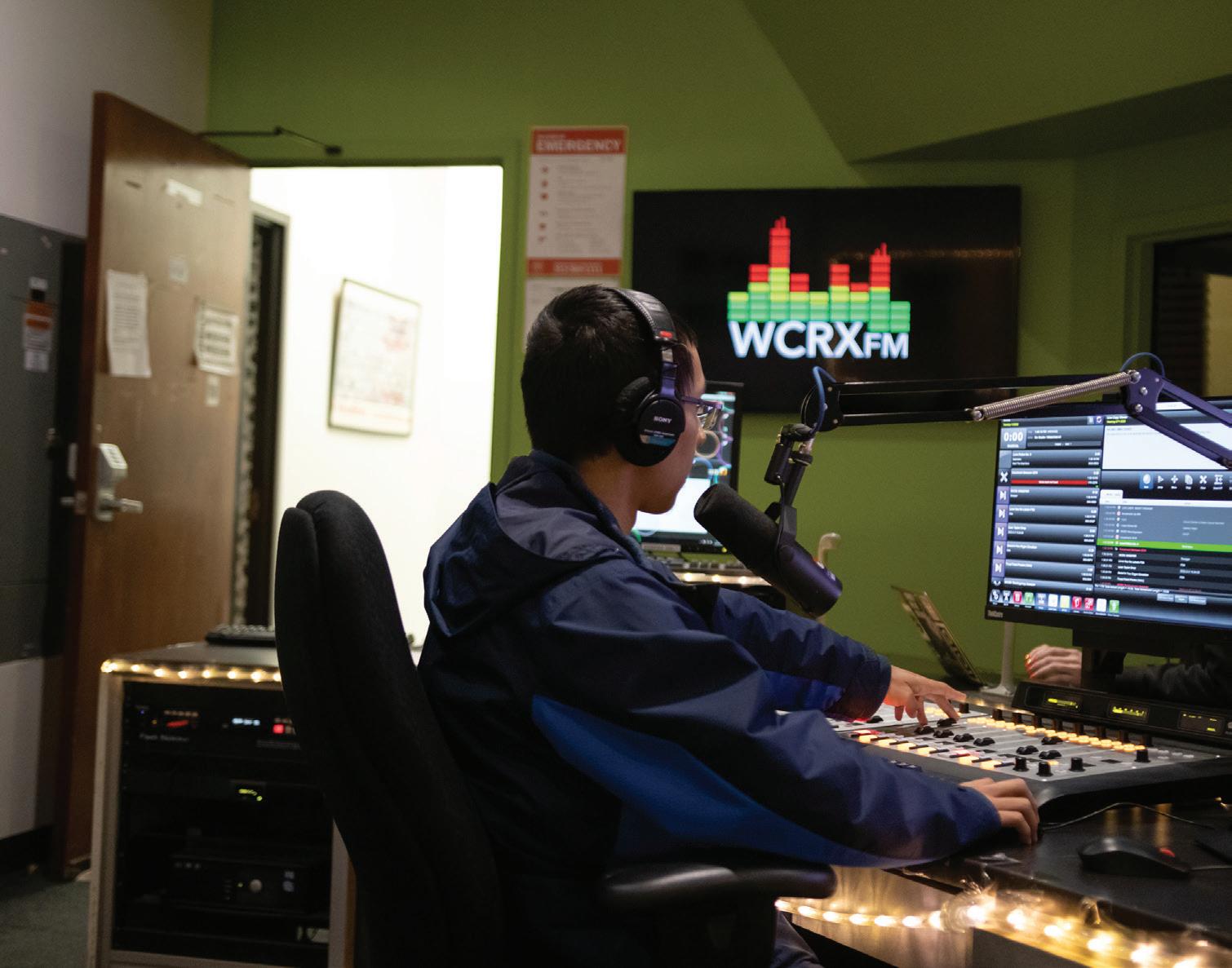

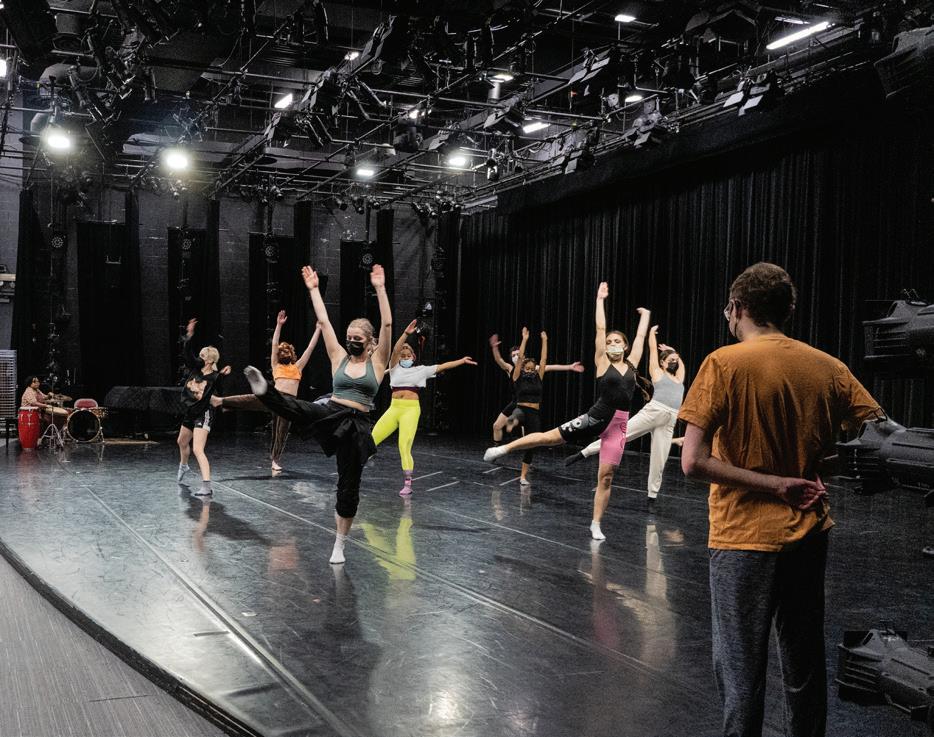
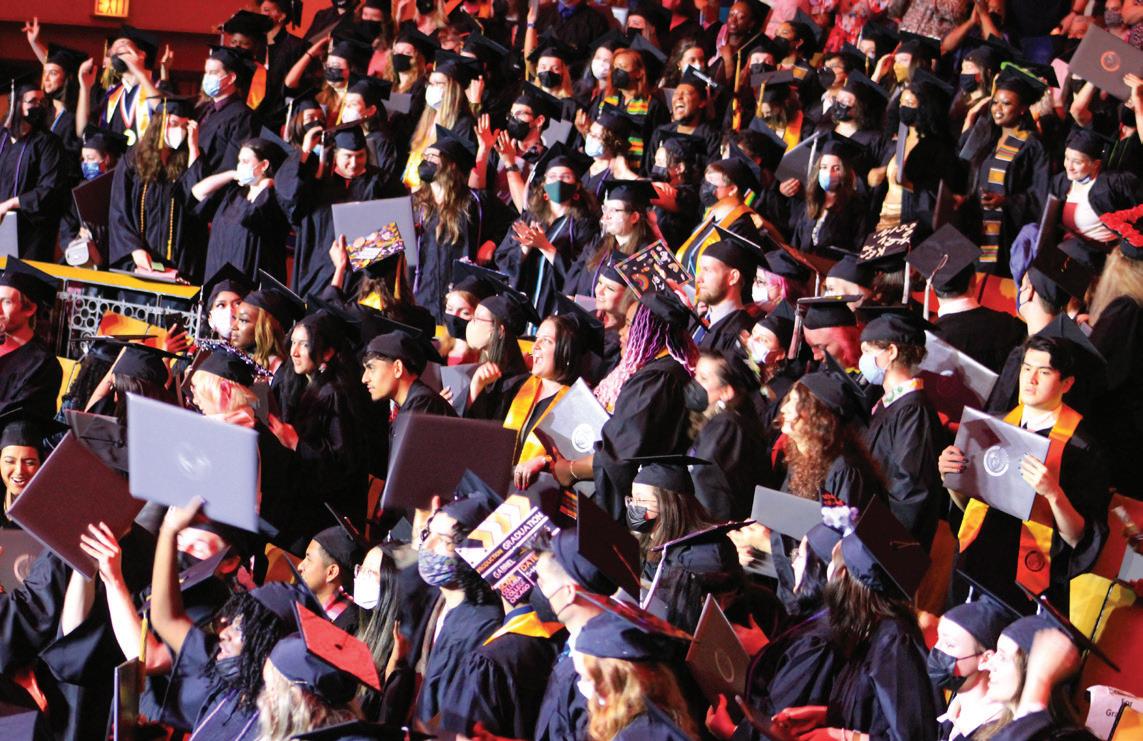
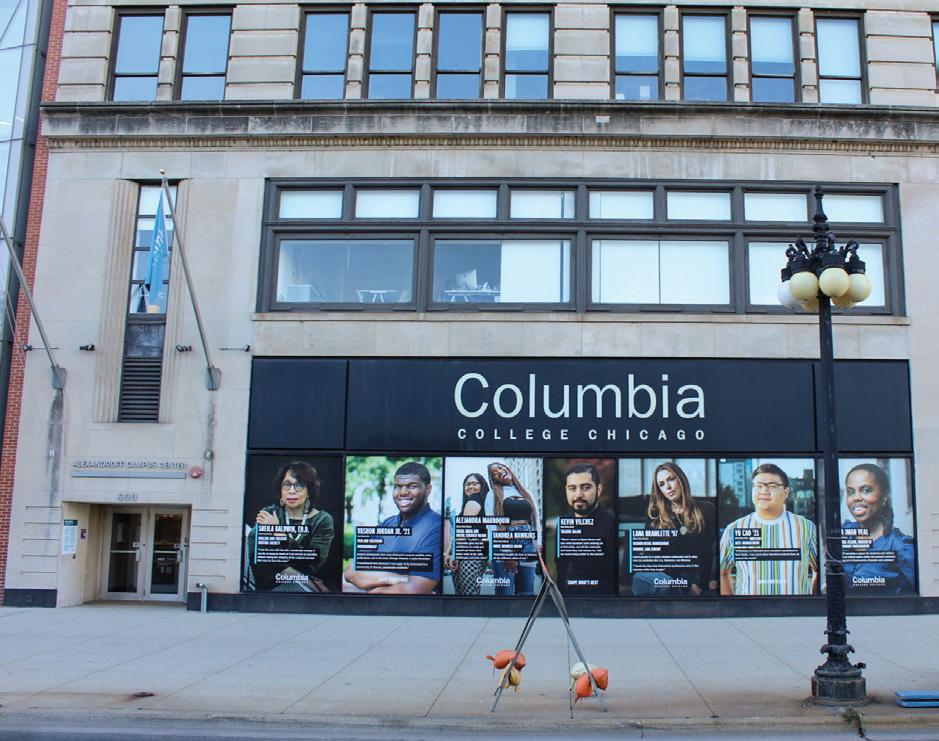

6.

AS THE TEMPERATURES begin to grow colder, one of Chicago’s legacy shelters prepares its facilities for the anticipated growth of people in need and experiencing homelessness.
The Pacific Garden Mission was founded in 1877 with the goal to aid the homeless in the city through the lens of the Christian religion.
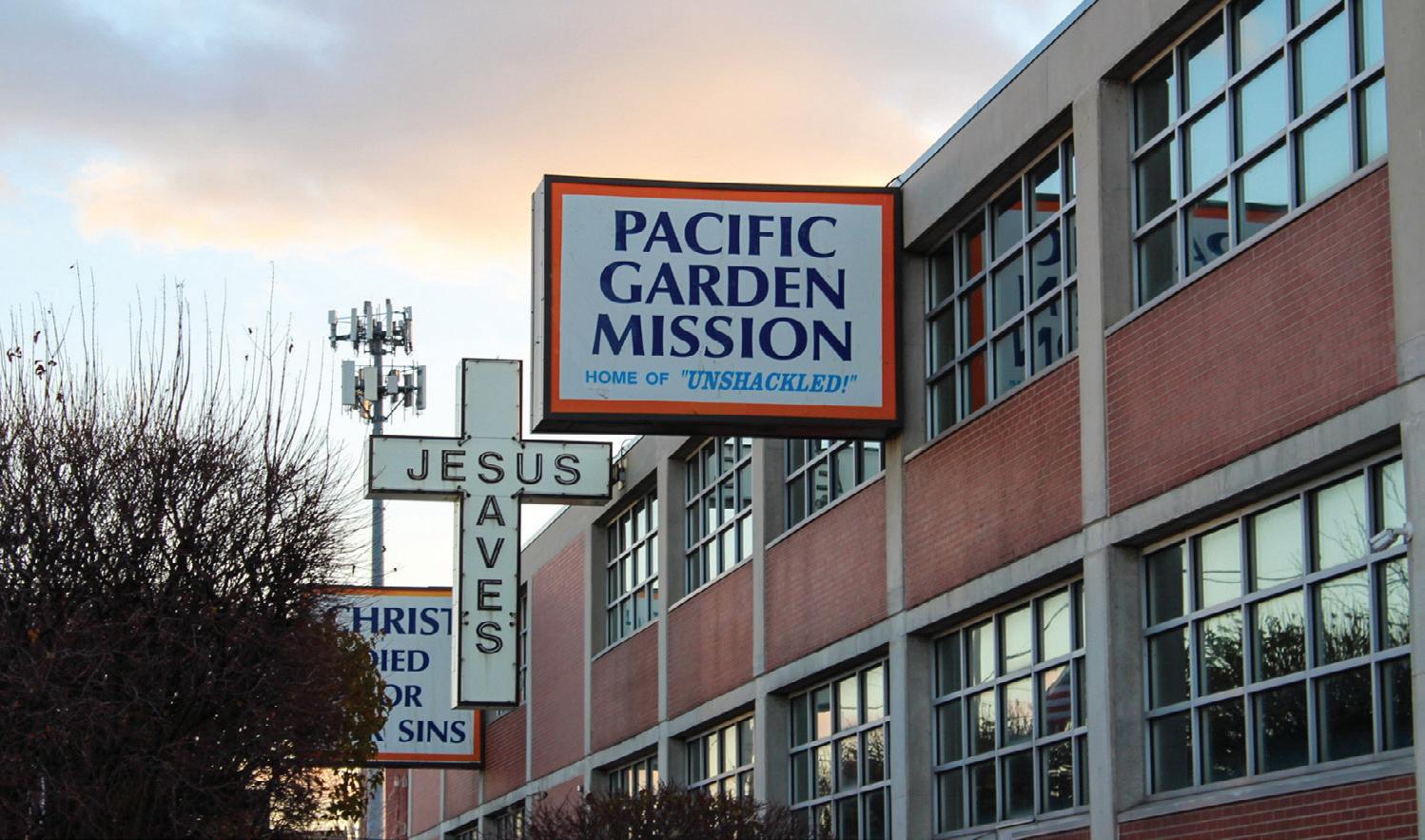
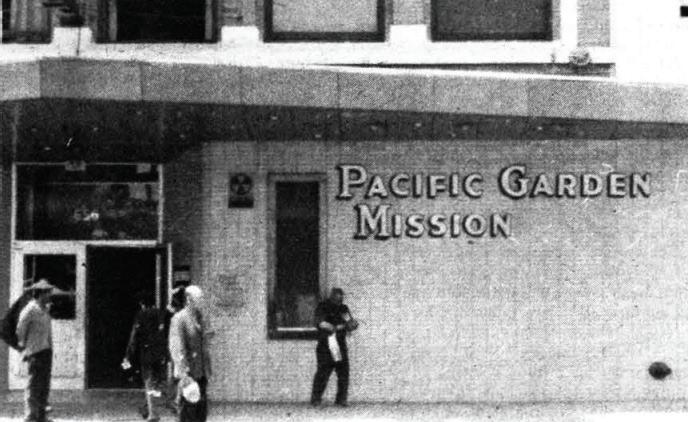
“The best way I can describe it is to say that through using scripture and my own personal experience … [it is to] understand the necessity of being a good steward of everything that God provides for us,” said Terry Cunningham, vice president of PGM.
PGM offers resources ranging from drug rehabilitation programs, dormitories able to house 1,200 people, a warming center, resources for parents with infants and other amenities like a barbershop, beauty salon and a clothing department, which provides free clothes to people at PGM.
In January 1984, the Chronicle reported on PGM at its former location near the intersection of State Street and Balbo Drive.
In 2008, amid its demolition to make way for the construction of William Jones College Preparatory High School at the same intersection, PGM was relocated to its current location at 1458 S. Canal St.
“It was heartbreaking,” said Philip Kwiatkowski, current president of the PGM,
referring to when Jones Prep took over the lot. “It was an iconic landmark that was taken down, so it was sad, even though we ended up with a nicer facility.”
Kwiatkowski has witnessed the major additions made to the facilities since his involvement with the mission in 1988, involving staffing improvements and navigating the changing needs over decades from clients.
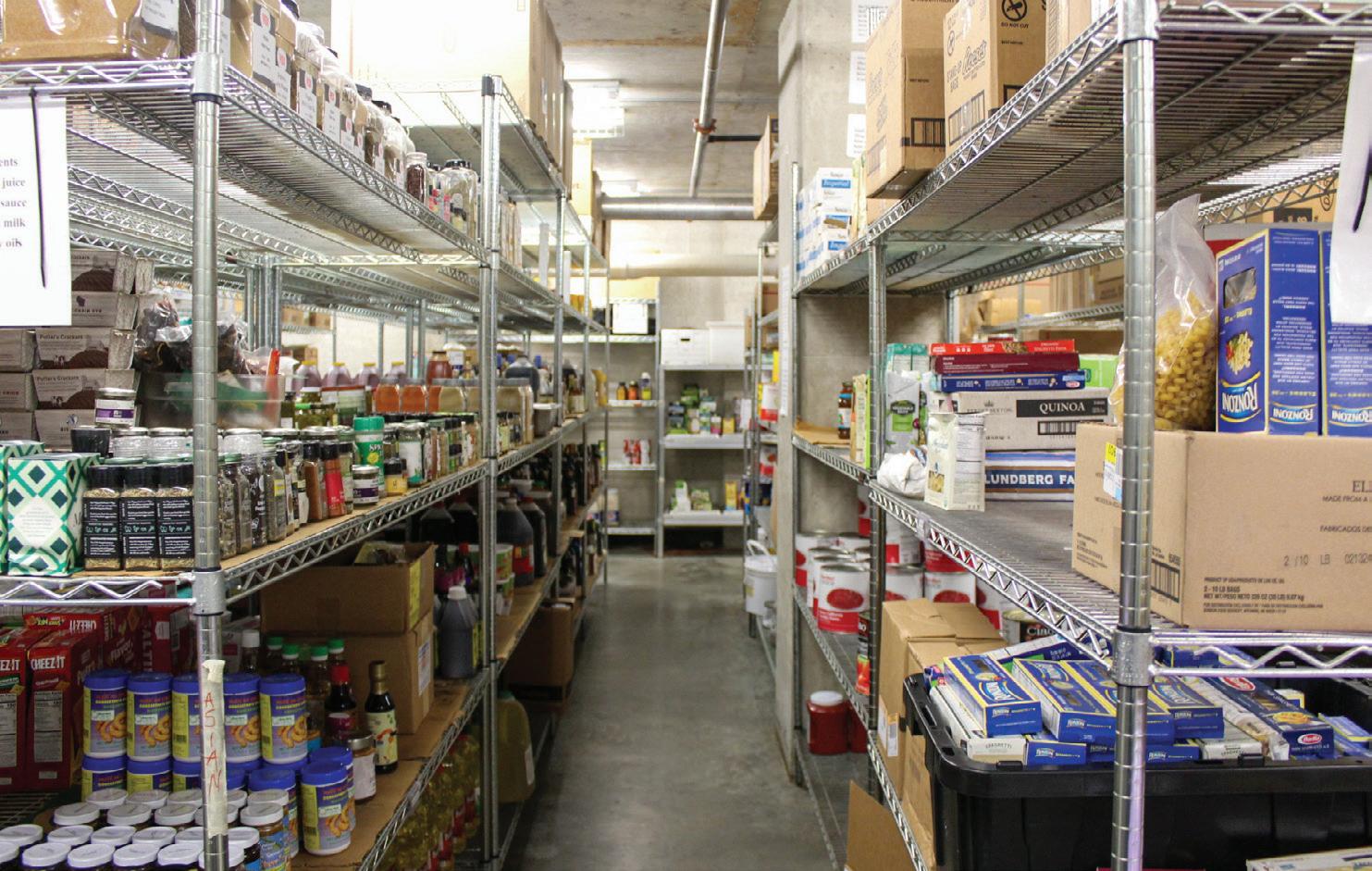
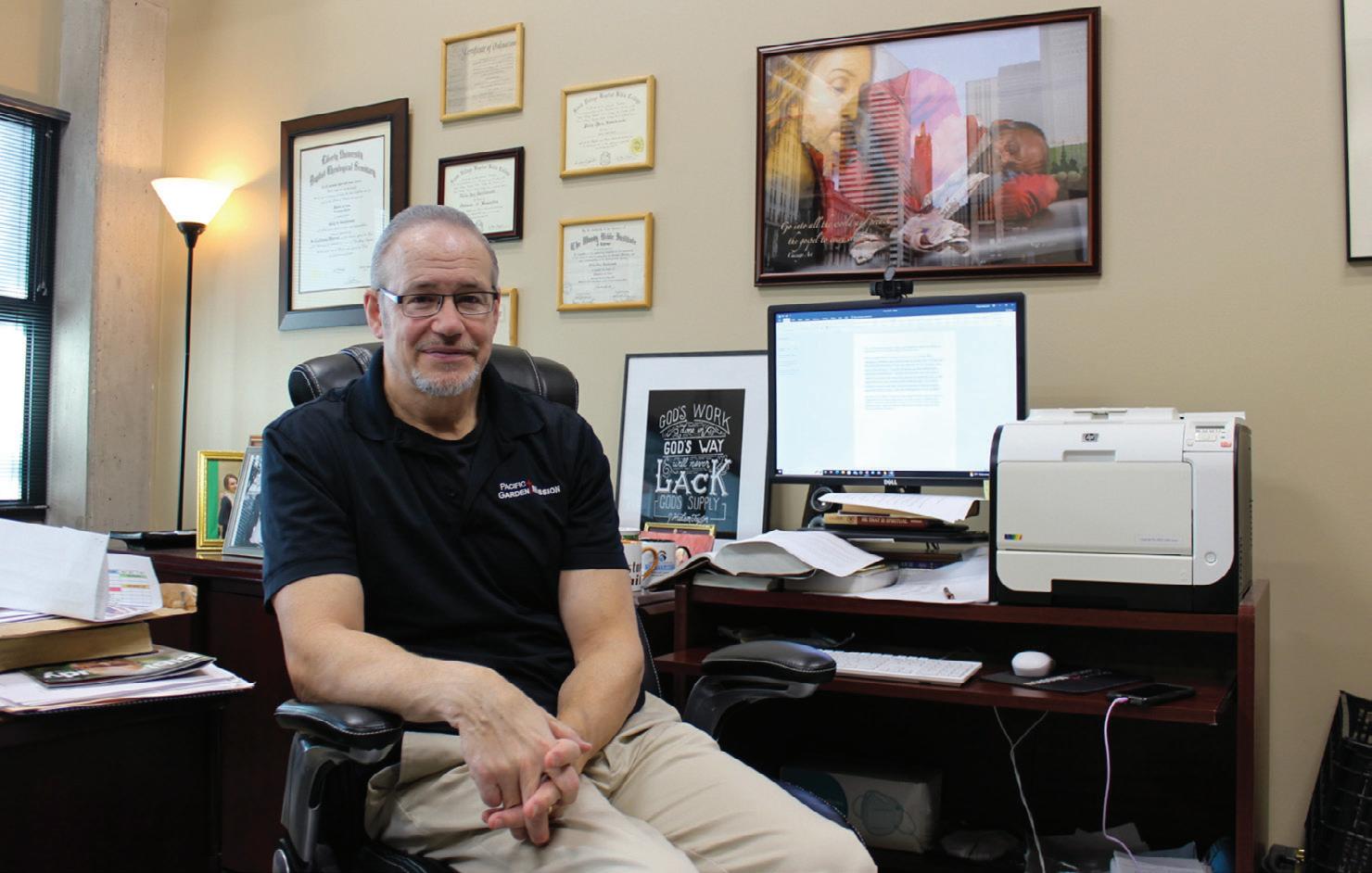
“I would say when I was a kid, I saw the same people. You’d get 20 to 100 people at the old facility, at max. Now, you have 900 people,” said Michael Kwiatkowski, assistant supervisor of hospitality and son of Philip. “The fact that they can stay here during the day and be cared for is the
biggest change from the old location to the new one.”
Harry Saulnier, one of the previous superintendents of PGM, was interviewed by the Chronicle in 1984 about PGM’s role in improving its former facility, and he is remembered as a “man with vision” by Philip Kwiatkowski.
“He started the radio program ‘Unshackled,’ [and] he started the women’s division,” Philip Kwiatkowski said. “I think nowadays, we have new issues that we’re dealing with that they weren’t dealing with back in the ‘80s. So I would have seen Harry continuing his legacy of being a visionary and taking the mission forward.”
WHEN SHEILA FORTSON came to Columbia in pursuit of a master’s degree, she did not realize how the teachings awaiting her would open a whole new world of the arts.
Fortson focused on music and perfecting her musical craft, but she had never really focused on any other types of art.
“Growing up being involved in music, that’s really all I had ever focused on,” Fortson said. “And so it was a whole new world that was opened up for me when I got to Columbia, and I began to explore the five major art forms that were offered in my master’s program.”
Fortson graduated from Columbia’s master’s program in 2011 and walked out with a degree in interdisciplinary art. Through the arts exposure provided through the program, Fortson was able to explore five major art forms, which were all interconnected.
“After that experience, I kind of thought, ‘Man, if I had had an opportunity to explore some of these disciplines as a kid, I wonder if I would have gone a different direction,’” Fortson said. “And I also began to think about what I wanted my life’s work to be. … I felt sort of an urgency to offer kids an opportunity to explore more than one art form at a time.”
The five different arts forms that Fortson connected with through Columbia’s master’s program were music, visual arts, drama, dance and creative writing.

From there, Fortson turned her passion into action, as she opened up the FAME Center — which stands for Fortson Arts and Music Education — located in the South Loop at 1319 S. State St., after moving in September.
The FAME Center provides equitable access to arts education to the next generation of creatives. The center directly confronts the lack of accessibility to music and fi ne arts education opportunities in under-resourced Chicago communities.
Fortson said it is rewarding to see students come through the FAME Center’s program.
“It’s so rewarding because I know that they’re going to take this with them throughout their life,” Fortson said. “I believe fully that the arts are an important part of the human spirit and the growth
of the human spirit. So I just see changes in everyone that comes through my door.”
The nonprofit operates in six pillars consisting of music, visual arts, drama and theatre, creative writing, digital art and art therapy. Fortson also incorporates mental health support into FAME’s programming.
“The mental health component of what we do is so important to me, because I feel like there is a mental health benefit as well as so many other benefits to the arts. I mean, I see kids’ grades improve and see their self-confidence grow,” Fortson said.
AJ Buegel has been a music teacher at the FAME Center since 2020, working with her students both in-person and virtually.
Buegel said in her experience, music education is important because it is a place where students are able to “ask the most questions.”
Buegel believes music education is
especially valuable for students whose brains are still developing, as it will give them a way to explore the world in an environment without fear of asking right or wrong questions.
Buegel’s students typically range from ages 7 to 14, but said she currently has a student who is as young as 6, and one grandmother who takes back-to-back piano lessons with her grandson at FAME.
Liesl Doxey-Crapo signed up her two children for programs through the FAME Center in summer 2022 after fi nding the organization in 2021. Doxey-Crapo said her kids went to a two-week camp three times over the summer and said it was a “great experience” for them.
Doxey-Crapo said having exposure to artistically-minded adults was a strengthening experience for her children.
“Most parents might be like, ‘Oh, they learned how to draw something,’ but for my kids, it was more of the experience of
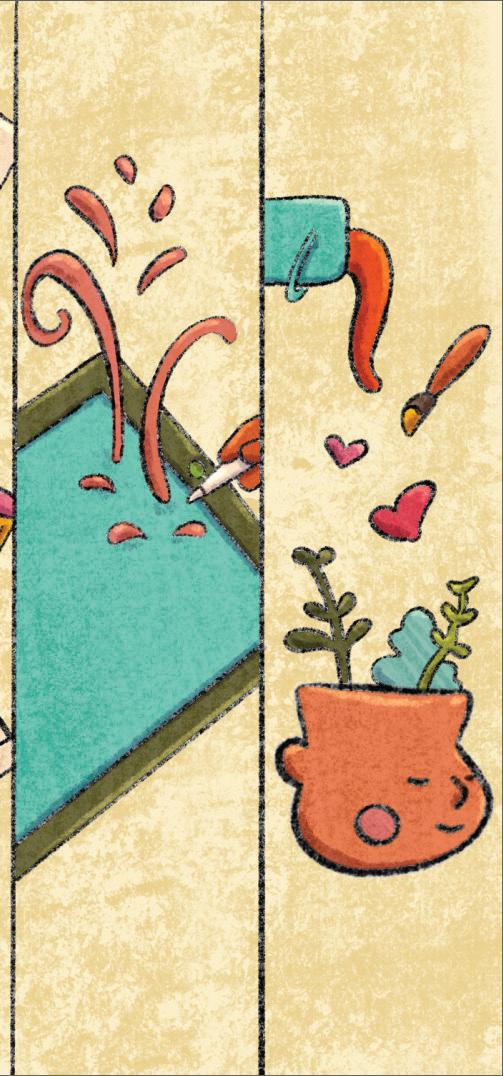
identity and expression and acceptance,” Doxey-Crapo said. “That was the biggest benefits to them.”
Doxey-Crapo said one of the major ways the FAME Center did this was by being sensitive to her children’s pronouns, as both of them use they/them pronouns.
Looking ahead, Fortson said the FAME Center wants to grow their scholarship program to bring more Chicago students into their classrooms. Fortson said their secondary goal would be to open up multiple FAME Centers in Chicago and eventually open them nationwide and globally as well.
“I would love to see us thought [of as a] leader in arts education,” Fortson said. “To be someone who’s on the cutting edge of doing art education differently.”
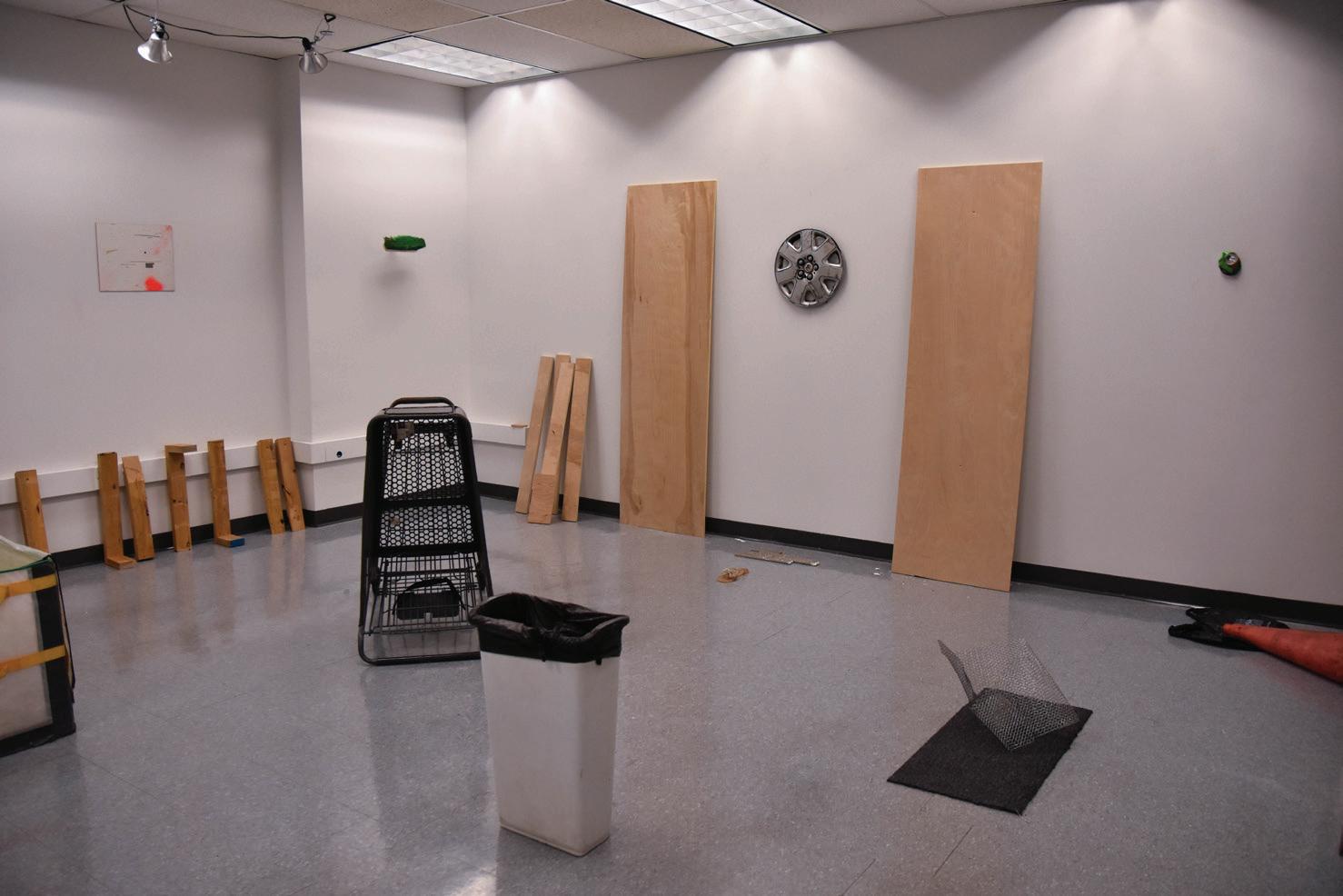
materials that no longer serve the general public but can be repurposed as something new.
For the second exhibition held at the Porous, Papineau-Couture wanted to also showcase work from artists that had been left unfinished or leftover materials they used to create the piece and give it new life by displaying the unfinished artwork as something fresh and different.
the artistic process.
“[It is] an exploration into ingenuity and how you use the environment around you without necessarily going out and buying something new,” Papineau-Couture said. “How you can re-conceptualize things that are in your vicinity that you thought maybe were unusable or are unusable?”
to its resourcing of used goods for artists to utilize in their later projects.
“I think that artists, designers, fi lmmakers [and] musicians should always be very mindful about the kind of garbage that they produce in the process of making a work of art,” Parr said. “I wonder if artists could be more mindful about what
» KIMBERLY KAPELA COPY EDITORABANDONED SHOPPING CARTS, trash bins and used stuffed animals grace the Porous Gallery in the newest installment of “The Discarded” exhibition.
Located at 623 S. Wabash Ave. in room 411, “The Discarded” is an experimental curatorial project by co-directors and curators Ryan Lucas and Grace Papineau-Couture. The exhibit highlights abandoned materials found on the street in hopes of it serving a new purpose for creators.
Lucas and Papineau-Couture, a second-year and a fi rst-year graduate student in the fi ne arts program, respectively, invite their visitors to think conceptually about trash, in hopes of shedding light on
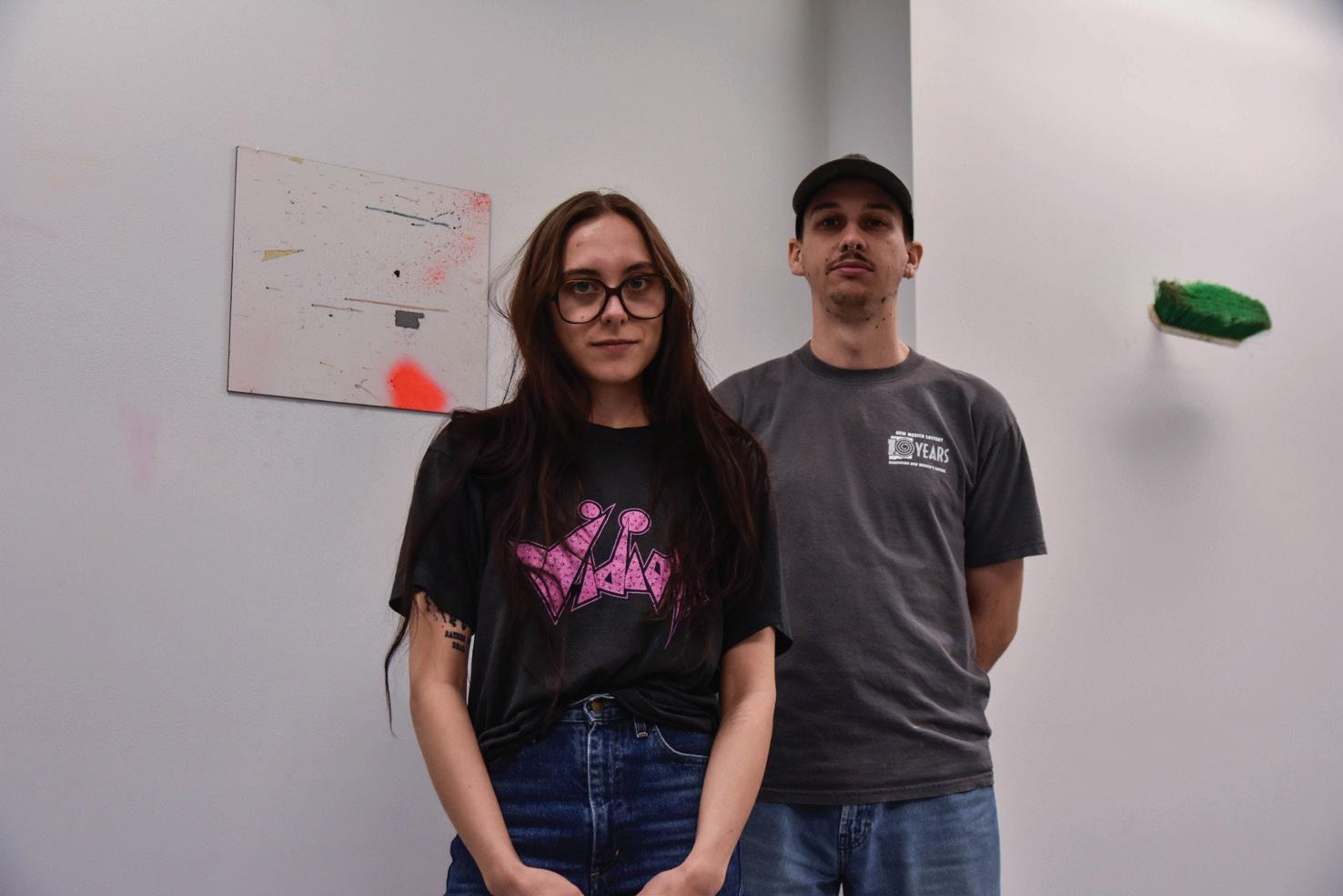

“Right now, it’s very found-object focused,” Papineau-Couture said. “So anything that we see on the street, and we are drawn to visually or feel like we could display as an object, rather than just a piece of trash. That’s our major deciding factor: can we display this as something that can be read as an object instead of street garbage.”
Lucas said in order to make new art, the artist has to go through scrapped concepts and abandoned pieces before it is put on display.
“Conceptually, trash in general is something that we take advantage of, and some of the things that you fi nd on the ground are the things that you take advantage of — everyday objects,” Lucas said.
The directors gave meaning to the already used objects found on the street to highlight the important role they serve in
Lucas and Papineau-Couture said they hope visitors can reevaluate their relationship with used materials and everyday items that can be used to create artwork, because the possibilities are limitless.
Debra Parr, associate professor in the Art and Art History Department, said she was “pleasantly surprised” at the items featured in “The Discarded” and how they contribute to the overall artistic vision and are tangential to art making.
Without its use of frames and pedestal display cases, “The Discarded” is a disruption of how typical artwork is presented.
“It was, in a way, a kind of a funny reminder about what we expect in a gallery setting,” Parr said. “When we’re a bit confused as to where one piece started and another ended, that was a really nice and thought-provoking way of disrupting the experience of looking at singular works of art that are clearly defi ned by frames and points.”
“The Discarded” has a sustainable aspect
happens to the work after they’ve made it; if it was for an assignment, for example, because I think one has limited storage capacity to keep everything efficient — like how could it be recycled or reused for another project?”
Parr took her art history class to visit the gallery and said it challenged the students’ expectations of what the exhibition might be about.
“I thought it was interesting to hear from the visual arts management students, who could see all of the standards and rules that they’ve been trying to master in their skill set for their program being discarded and not absorbed,” Parr said. “I think they found it to be funny and also kind of eye-opening.”
“The Discarded” exhibition, which opened on Nov. 10, runs at Porous Gallery until Dec. 15 and is open on Thursdays from 1 to 3 p.m.
BEING A NONTRADITIONAL student at Columbia College Chicago can be a lonely experience.
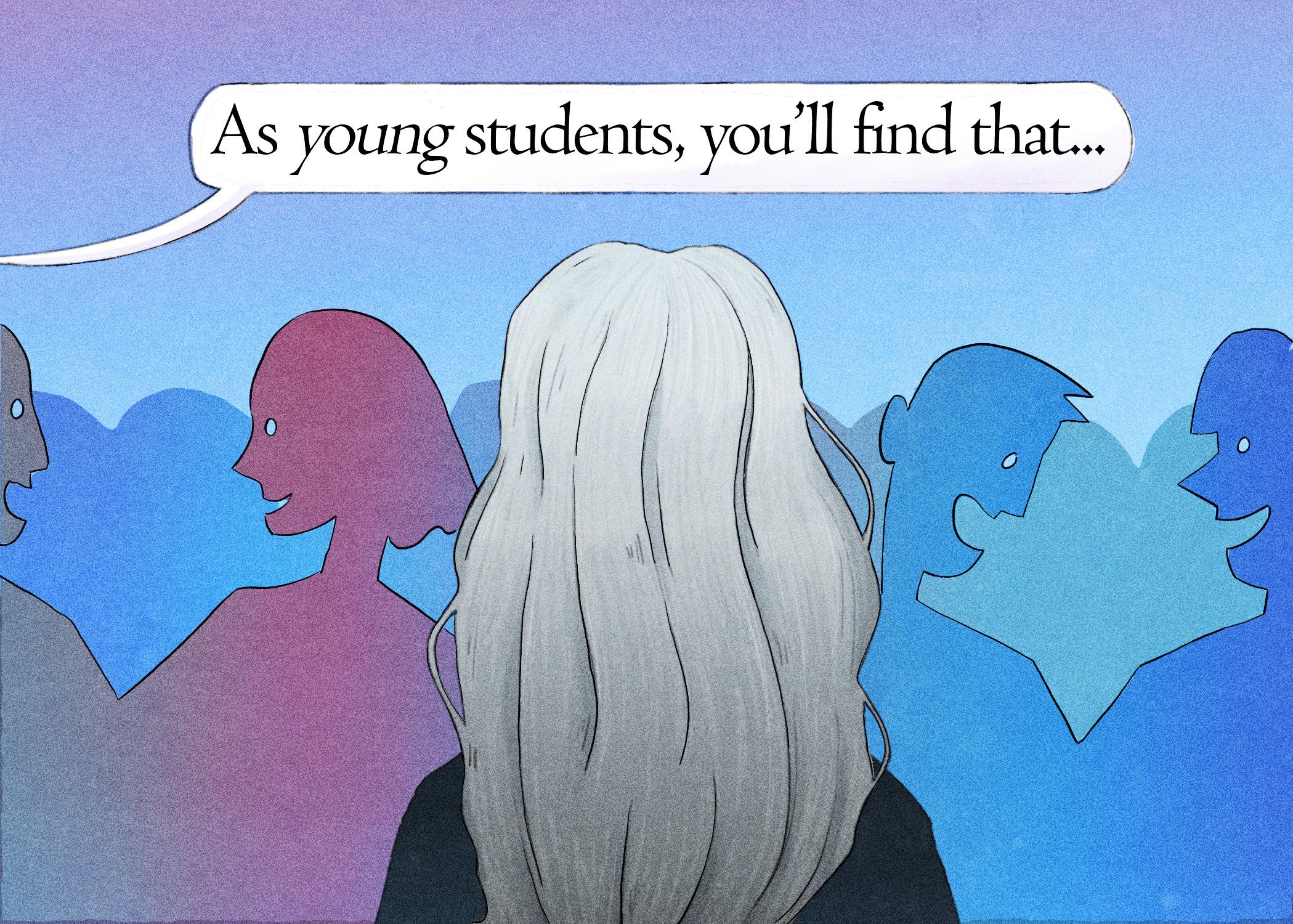
During my first-semester orientation, there was no mention of services or events a person my age might feel comfortable making an appointment for or attending. In classes, professors always unconscious ly default to “as young students, you all will find that…” language.
Not having Columbia staff acknowledge the special concerns of older students, financial or otherwise, does not feel good. I do not feel they would know how to address my issues because they are not trained to do so, so I do not mention my problems.
According to Univ Stats, in the 202021 academic year, of 6,769 students at Columbia, there were 15 undergradu ate students between 50 and 64 years old and one undergraduate student
over 64. As a soon-to-be 64-year-old student at Columbia, loneliness aside, this statistic sets my outlier status in stone.
Doubling down on Columbia’s lack of nontraditional student recruitment, the school’s planned 5% tuition in crease for the 2023-24 academic year, following a 10% increase for this year, could cause nontraditional students like myself to leave Columbia in search of a more welcoming and affordable environment.
In order to finance my tuition at Co lumbia, my husband and I agreed to use money we saved over 30 years to fund our lives after his retirement this past September.
Going forward, we realized taking two, three-credit-hour classes per semester, at a cost of $12,132 per year, isn’t sustainable notwithstanding the coming increase in tuition.
Every year at school, I receive emails about applying for financial aid, but the
idea of owing so much money after gradua tion at my age did not make sense, based on financial headwinds I witnessed younger, traditional students facing.
According to the U.S. Department of Education’s College Scorecard, last updat ed in September 2022, 31% of Columbia undergrad students owe more money than the amount of their original loan due to interest and accrued interest two years after beginning repayment. Columbia’s fiscal year statistic indicates mean under graduate debt after graduation is $31,940.
In 2021, 52% of Columbia students were recipients of institutional grants for full-time students, emphasizing the school’s push for younger students who can attend full-time. I don’t meet the eligibility requirement for these grants because I cannot attend school full-time, due to the necessity of work. I have looked into outside scholarships and the fulltime registration eligibility requirement is the norm.
The Free Application for Federal Stu
dent Aid should also be overhauled to increase student inclusion. The feder al student aid program is, for example, based on parental income. I do not have parents anymore.
Ironically, by increasing tuition to make our school financially solvent to fund student classes, pay for professors and support services, the increase prompts me to consider leaving Columbia.
We are plentiful and diverse. We tend to work full-time while going to school, we can be low-income, military personnel, working parents or commuters.
Thirty-nine percent of nontradition al students aged 40 and above attend school part-time. We are more like ly to take online classes and can be financially independent.
According to Insight Into Diversity, a publication which writes about diversity issues in higher education, lack of tech nology knowledge is a major factor for nontraditional students over 40 seeking higher levels of education. Pandemic-re lated job losses caused nontraditional students to move from leisure learn ing to seeking higher education degrees for survival.
As of 2020, “one in 10 college students is 40 or older, and by 2027, 3.3 million students will fall within this age group,” according to the National Center for Ed ucation Statistics.
Shifting to a targeted, intensive plan to recruit and retain more nontradi tional students could help Columbia increase enrollment and solve finan cial issues hinted at by successive tuition increases.
I do not want to leave Columbia. I am close to achieving my dream of becoming a freelance journalist and having a full-time job with health benefits for my husband and myself.
To be clear, my support comes from my professors, classmates and above all, the Chronicle staff and management. But Columbia’s focus on youth affects my sense of belonging to the larger community and having school pride.
Our school exults in diversity, equity and inclusion, but its lack of marketing, services, scholarships and events and absence of dedicated staff members to address the unique needs of nontraditional students, says otherwise.
I just want to belong, and seeing me would be a good start in getting me to graduation.
HUMANITY ACROSS THE globe now or will at some point endure the horrors of climate change, including but not limited to the following effects: unbearable heat waves, devastating flooding, raging wildfires, insufferable drought, food insecurity and water scarcity, environmental racism and resource depletion.
Meanwhile, world leaders continued to contribute to climate destruction and greenhouse gas emissions by flying in on private planes and jets to gather for this year’s Conference of the Parties in a paradise of a city, Sharm El-Sheikh, in Egypt, a country that heavily relies on oil, coal and natural gas.
For the 27th annual meeting of COP, or United Nations Climate Change Conference, President Joe Biden, European leaders, the crown prince of Saudi Arabia Mohamed bin Salman, and Egypt’s foreign minister Sameh Shoukry met from Nov. 6 to Nov. 18 to casually debate and discuss whether they should take concerted action against the climate crisis.
Since 1992, countries that are a part of the Paris Agreement have congregated annually in alleged commitment to:
Take steps to mitigate greenhouse gas emissions; recognize that countries vary in their contributions to climate change and capacities to address it, so their obligations will likewise vary;
As reported by BBC, more than 600 people at the conference were linked to fossil fuels, a 25% increase from last year’s meeting.
This year, in response to COP27, The Guardian and more than 30 international media outlets in more than 20 countries released a joint editorial that calls for “radical thinking” on how to fund climate
public, yet, climate activists were arrested there for using their voices to call on leaders to divest from fossil fuels and urging leaders to keep their promises.
Climate activist and leader Greta Thunberg chose not to attend this conference, shaming it for “greenwashing,” a term used to describe organizations that mis-
Alaa Abd El-Fattah is an Egyptian, democratic activist who had been on a hunger strike since April for the climate, and then a water strike starting at the beginning of November to bring attention to Egypt’s leaders in time for the COP27 climate conference.
Environmental journalists like Naomi Klein attended and reported on the arrests of other protesters from her Twitter page.
“Human Rights Watch estimates that *700 Egyptians* have been arrested in government attempts to prevent protests from breaking out during #COP27,” Klein tweeted. “All delegates and especially governments should have something to say about this. A high price is being paid for this green show.”
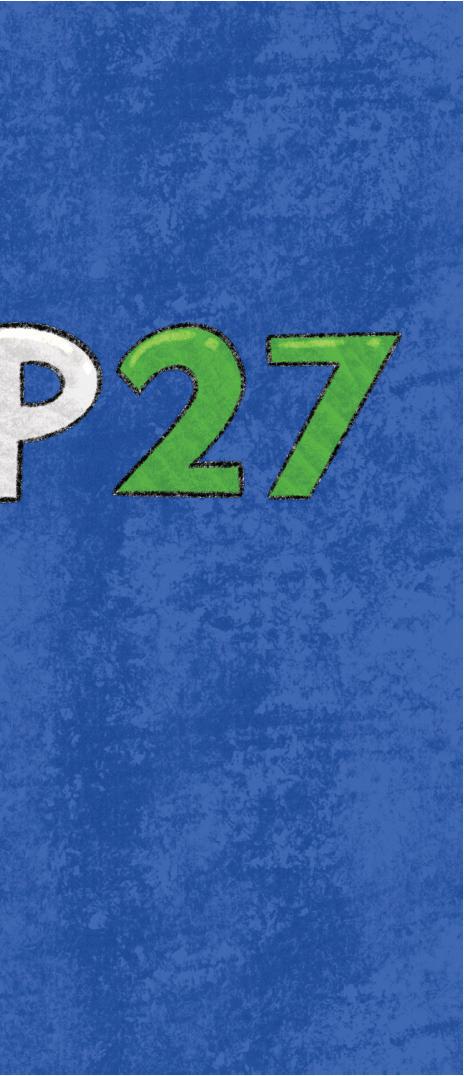
According to Klein, three Egyptian journalists were also arrested by Egyptian police during the conference.
» KAYLA MACEDO/CHRONICLELeaders from China, Russia and India, countries within the top five of carbon dioxide emissions, were not in attendance. The United States is second on the list of countries with the most CO2 emissions.
Rather than coming to any sort of impactful solutions, these so-called world leaders have left this inescapable issue on the gas back-burner, literally.
In 2015, world leaders promised to prevent the global temperature from exceeding 1.5 Celsius. As the year 2023 approaches, climate change has become a climate crisis, and countries are still grappling with whether this goal is achievable.
have developed countries assist developing countries in reducing emissions and coping with climate impacts.
By choosing greed and power over delivering for people and the planet, our leaders have instead committed to:
Continue to allow fossil fuel companies to dominate the world; ignore the billions of people on this planet who perish and let them suffer from this immorality; watch from the comfort of their lavish lifestyles and encourage people to “do their part,” which really has no significant impact on the environment.

action, specifically calling for a climate tax on fossil fuel giants.
According to the editorial, countries have “only promised to do one-fiftieth of what is needed to stay on track to keep temperatures within 1.5 Celsius of pre-industrial levels.”
“With COP27 taking place in Egypt, we wanted to publish an ambitious editorial that highlights how strongly many different news organizations, and our readers, feel about the climate crisis,” said Katherine Viner, the editor-in-chief of the Guardian News and Media.
The conference was open to the
inform consumers in an attempt to present themselves as environmentally responsible.
Thunberg took to Twitter to also urge Egyptian authorities at COP27 to release 60,000 people that have been imprisoned by the Egyptian regime due to political activism.
“One of these prisoners is Alaa Abd El-Fattah, who is now on a water strike since the beginning of COP27,” Thunberg tweeted. “A system that doesn’t address the needs for climate justice and securing human rights is a system that has failed everyone –we need to keep both in mind.”
In the wake of destruction cast upon the climate and humanity, billions suffer from disease and hunger, war continues to break out as countries are turned against each other in a battle for resources, citizens across the world are being punished for standing up for what is right while trying to spread the truth and people in power are blinded by dollar signs, losing sight of empathy.
Instead of sipping refreshing piña coladas at a resort while the people of their countries ingest toxic, lead-infused water and live in squalor, our leaders must undergo radical moral transformation.
In turn, it is imperative that they also evolve from depending on a fossil fuel economy, retire this industry completely and implement radical reformative action toward sustainable solutions.
on” type of quality to it. We knew that we had a job to do every day, and it was on us to figure out how to meet our goals by any means necessary.
I want to thank her for sticking through it with me and for being someone to talk to, whether through spoken word or telepathic commu nication, when we had no clue what was going on but needed to figure out a solution. There’s no chance that I would’ve made it through my first year in this role without her in the desk right next to me.
After Camryn graduated this past May, Anna stepped into the role of coeditor-in-chief, and the same could be said for her — that I wouldn’t have made it through these past six months without her presence.
meant to me during this journey. We’ve got plenty of stories that only we would under stand, and I look forward to reminiscing over them down the road.
To the staff of the Chronicle, thank you for your hard work that you put in day in and day out. Our jobs aren’t easy by any means, but that never stopped you from pushing for ward and continuing to report on the news important to the Columbia community.
I’m so proud of each of you and all that we accomplished together. You made me proud to hold this title every day.
» NOAH JENNINGS CO-EDITOR-IN-CHIEFI’VE READ 21 of my former colleagues’ good bye columns and edited 11 of them. You would think I’d have picked up a thing or two from them, and yet I’m somehow at a loss for words now that it’s time to write mine.
But nonetheless, here we are. How do you begin to unpack an experience like working at the Chronicle?
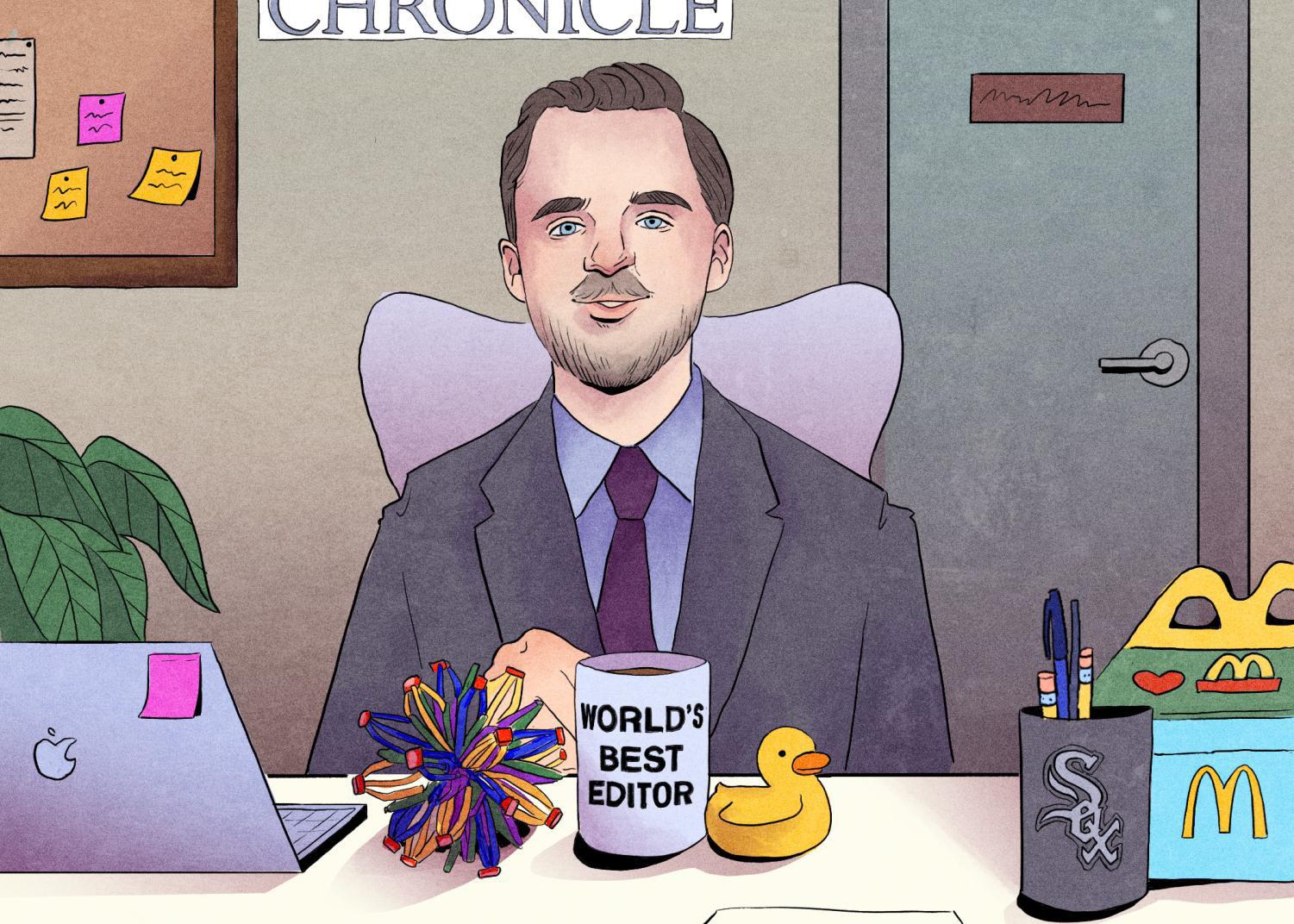
Perhaps you start by looking back to the beginning. My resume would tell you it be gan two and half years ago when I started at the Chronicle as a staff reporter, but it really goes back much further.
I remember stepping foot in the Chron icle office when I took a tour of Columbia as a high school senior. Observing all the staffers working hard at their assigned desks and simply feeling the level of professionalism in the air was enough to tell me that Columbia was the next step I was looking for following my high school newspaper experience.
From there, time flew. The Chroni cle, primarily General Manager Tra vis Truitt and Faculty Adviser Curtis Lawrence, took a chance on an 18-yearold kid, despite having a horrible work ing knowledge of how to operate Zoom during his job interview. They would take another chance a year later when they promoted the same kid to co-edi tor-in-chief, despite only having a year’s worth of experience as a staff reporter.
I can’t begin to thank them enough.
As I start to look back on my time at the Chronicle, I realize how lucky I was to have people in my corner who were willing to take chances on me. I realize how lucky I was to have a space where I could not only grow as a journalist, but also consider it my on-campus home.
As a commuter student, the Chronicle office really became my central hub on campus, my home away from home. When I think of the Chronicle years from now, I know the office is the first thing I’ll visu alize in my mind.
I’ll miss the daily shenanigans, the sense of excited urgency during a production night, my desk and all of the knick-knacks cluttered on it, but most importantly, I’ll miss the people in the office.
I had 80 colleagues during my time at the Chronicle, and it was a privilege to work with each and every one of them. While I obviously can’t list all of them here, there are two in particular that I need to thank: Camryn Cutinello and Anna Busalacchi.
Camryn stepped into the co-editorin-chief role the same time I did. While we both had leadership experience from newspapers at previous schools, when it came to the Chronicle, we were both making a huge leap to the top from our reporter positions.
We were learning the ropes on the fly and had to rely on each other to figure it all out. We always said that the Chronicle is a living entity, and it has a “show must go
While she had obviously been an in tegral part of our team during her time as managing editor, when Anna made the jump to co-editor-in-chief, she injected new life, new ideas and new perspective at the Chronicle, particularly from the leadership standpoint. We don’t observe many extended breaks at the Chronicle, since we work through summer, so Curtis, Travis and I were pretty exhausted by the end of last school year.
But Anna’s presence as co-editor-inchief gave us a new sense of energy and renewed urgency to cover some of the big, daunting and draining stories happening on campus.
But above all of that, I think what I ap preciated the most about my time working with Anna were the times that we could pause for a moment and just discuss how we were feeling about life. With both of us graduating, we’re entering new phases of our lives simultaneously. I appreciate the moments we’ve had where we can detach from the work element and talk about leaving college and entering the workforce, among other things.
So I want to thank Anna for working alongside me and providing those addi tional perspectives and for maintaining the mutual support that we have for each other as we look ahead to our next chapters.
Something Travis has told me that I tend to agree with is: “There is no one who can understand what being a college newspa per’s EIC is like other than a college news paper’s EIC.” I cannot understate enough how much both Camryn and Anna have
Know that you are in very good hands moving forward, and I can’t wait to see the amazing work you all produce. Come Dec. 17, the day I become a Columbia alum, the Chronicle will have a brand new number one fan. And for whatever you may need, don’t be a stranger — my phone line is always open.
To the readers of the Chronicle, thank you for placing your trust in us to be your source of news within the Columbia community and for your never wavering support.
I think one of the biggest life lessons I learned from my time at the Chronicle is the importance of taking chances. My best stories only happened because of the chances I took. Whether it be inquiring for an interview with a potential source who I assumed was a long shot to respond, asking the outside-the-box question during an interview or taking time to research if a problem I thought may exist, actually exists.
Many times my intuition was right. The long-shot source left me on read (or more likely in the trash bin). A source refused to answer. But through all the failed chances, there were small victories that encouraged me to keep going.
I took a chance applying to be co-editorin-chief in the first place, and the leadership at the Chronicle took a chance right back by picking me.
So, the ball is back in my court and it’s once again my turn to take a chance or two, wherever it may lead me, as I start a new phase of my life.
And I suggest that you, too, keep taking chances. Who knows, you just might find yourself in the middle of a life-changing experience surrounded by amazing people.
BITTERSWEET. THIS WORD has been repeating over and over in the back of my mind since the start of this semester.
There was always a feeling of anticipation felt since I started at Columbia in 2019. That same feeling was there when I was hired at the Chronicle in 2021 as a staff reporter and photojournalist.
It was the feeling where I knew this moment would conclude as quickly as it arrived.
I’m reminded of a time when a teacher at my former high school told me that the next four years of my college experience would come and go in the blink of an eye. At the time, I doubted her.
It was daunting to believe the past four years could be such a blur, yet here I am. Roughly 3 1/2 years of my college experience wrapping up in the coming weeks.
Graduating has always been a dream of mine, alongside that of my parents who immigrated from Mexico to the United States in the late ’90s.
Even with the excitement I feel to fi nally receive my degree, I couldn’t shake the distressing realization that these are my
last few moments as a student — and as a reporter for the Chronicle.
Yet, I found comfort in these feelings stemming from the major appreciation I have for the Chronicle staff and what they have provided me.
When I fi rst started as a commuter student, I would show up to my three-hour classes, do the work for the day, then commute back to my home in Pilsen.
It was that same cycle for my fi rst two semesters, which broke when the pandemic hit, halting the Spring 2020 semester.
The pandemic exacerbated the disconnect I felt towards the Columbia community both physically and mentally; it led me to question the point of me being here in the fi rst place.
I didn’t have a community at Columbia, and as a fi rst generation student I was confl icted by the feeling that I was only pursuing higher education for my immediate family, rather than for nurturing my own education and passions.
I hated that feeling, and the additional feeling of guilt for prompting the question of dropping out and pursuing other interests weighed in the back of my mind.
Yet, I knew I always had an interest in
journalism – I just didn’t know it until after I started at Columbia.
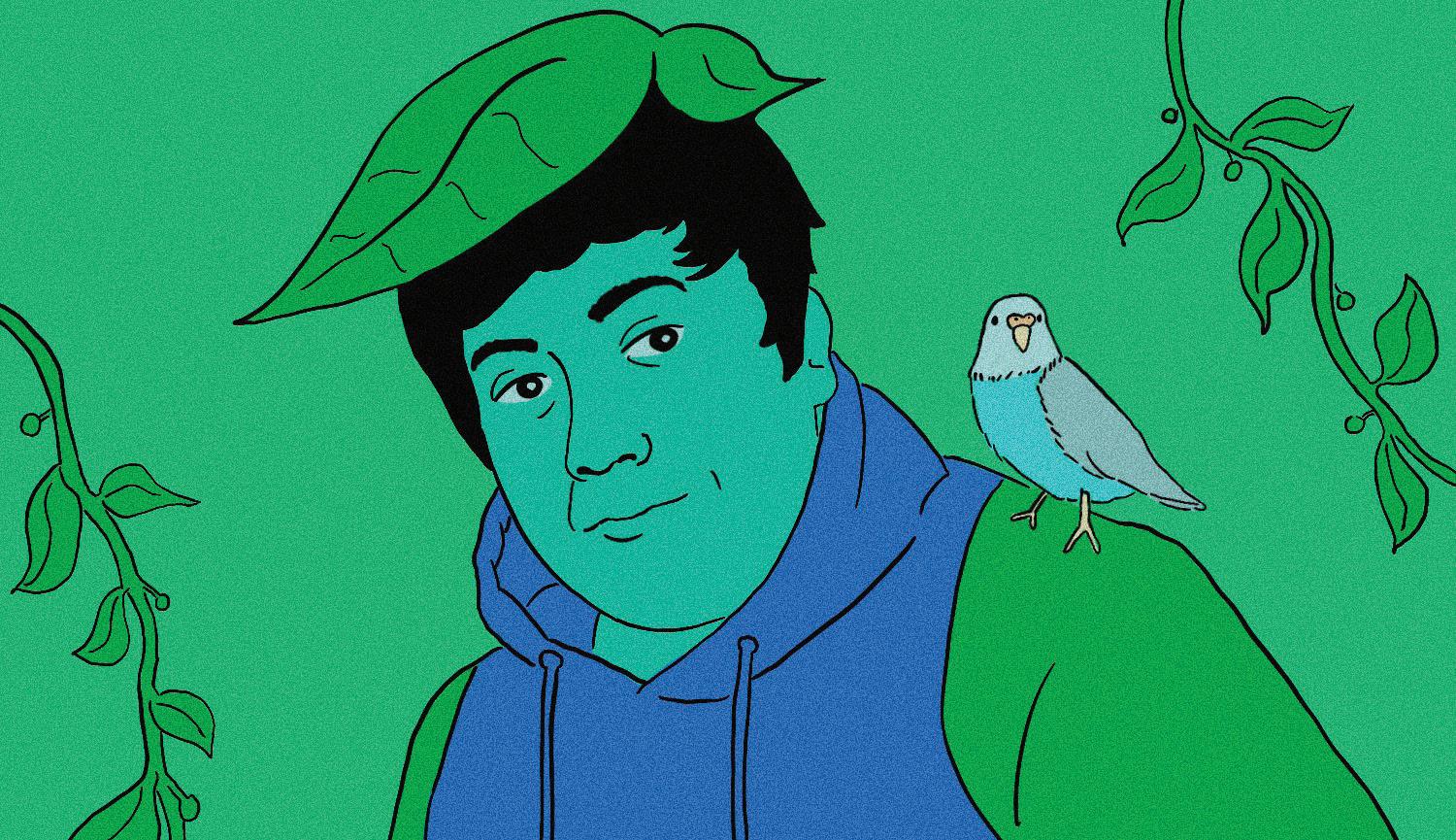
The following Fall 2020 semester, I took my fi rst couple of journalism classes over Zoom, unaware that writing and reporting was an interest I had; it was something I wanted to attempt out of curiosity.
It was only then I was introduced to the Chronicle by Professor Sharon Bloyd-Peshkin and Associate Professor Curtis Lawrence.
Applying to the Chronicle was a wildly anxious process for me, but I found comfort in understanding how competitive it was — how probable it was that I’d be rejected.
But when General Manager Travis Truitt called me, letting me know I was hired on as a Fall 2021 staff reporter, it would be an understatement to say I was excited. Apologies to Truitt for screaming into the phone!
The Chronicle gave me a community to depend on at Columbia — a space on-campus to get to know people in and out of my department, further fostering those connections.
It gave me a platform to tell stories about my neighborhood, Pilsen, and explore the city further. Most importantly, it gave
me the ability to learn from my mistakes under the guidance of other student journalists and incredible advisors.
I want to thank Truitt and Lawrence for taking a chance on me and guiding me as I practiced reporting, writing, photography and for letting me tell stories about my community.
A massive thanks to the former and current management team at the Chronicle; they are incredible leaders and journalists, and I am happy to have worked beside them through multiple stories and issues.
Thank you to the entire Chronicle staff who have been such immense inspirations to me and even greater friends.
Shout out to former Associate Professor of Instruction Shanita Baraka Akintonde, Associate Professors Elio Leturia, Yonty Friesem and Jackie Spinner, who all have been some of the best instructors I’ve had in my college experience.
I’m thankful for the relationships I’ve made at the Chronicle and at Columbia as a whole.
Thank you for these bittersweet memories. Now, who is going to tend to the Chronicle plant garden when I’m gone?

